第20章 Redis配置
20.1 Redis基础配置文件

20.2 Redis备份(持久化)
save 900 1 save 300 10 save 60 10000 # By default Redis will stop accepting writes if RDB snapshots are enabled # (at least one save point) and the latest background save failed. # This will make the user aware (in a hard way) that data is not persisting # on disk properly, otherwise chances are that no one will notice and some # disaster will happen. # # If the background saving process will start working again Redis will # automatically allow writes again. # # However if you have setup your proper monitoring of the Redis server # and persistence, you may want to disable this feature so that Redis will # continue to work as usual even if there are problems with disk, # permissions, and so forth. stop-writes-on-bgsave-error yes # Compress string objects using LZF when dump .rdb databases? # For default that's set to 'yes' as it's almost always a win. # If you want to save some CPU in the saving child set it to 'no' but # the dataset will likely be bigger if you have compressible values or keys. rdbcompression yes # Since version 5 of RDB a CRC64 checksum is placed at the end of the file. # This makes the format more resistant to corruption but there is a performance # hit to pay (around 10%) when saving and loading RDB files, so you can disable it # for maximum performances. # # RDB files created with checksum disabled have a checksum of zero that will # tell the loading code to skip the check. rdbchecksum yes # The filename where to dump the DB dbfilename dump.rdb # The working directory. # # The DB will be written inside this directory, with the filename specified # above using the 'dbfilename' configuration directive. # # The Append Only File will also be created inside this directory. # # Note that you must specify a directory here, not a file name. dir ./ ################################# REPLICATION ################################# # Master-Slave replication. Use slaveof to make a Redis instance a copy of # another Redis server. A few things to understand ASAP about Redis replication. # # 1) Redis replication is asynchronous, but you can configure a master to # stop accepting writes if it appears to be not connected with at least # a given number of slaves. # 2) Redis slaves are able to perform a partial resynchronization with the # master if the replication link is lost for a relatively small amount of # time. You may want to configure the replication backlog size (see the next # sections of this file) with a sensible value depending on your needs. # 3) Replication is automatic and does not need user intervention. After a # network partition slaves automatically try to reconnect to masters # and resynchronize with them. # # slaveof <masterip> <masterport> # If the master is password protected (using the "requirepass" configuration # directive below) it is possible to tell the slave to authenticate before # starting the replication synchronization process, otherwise the master will # refuse the slave request. # # masterauth <master-password> # When a slave loses its connection with the master, or when the replication # is still in progress, the slave can act in two different ways: # # 1) if slave-serve-stale-data is set to 'yes' (the default) the slave will # still reply to client requests, possibly with out of date data, or the # data set may just be empty if this is the first synchronization. # # 2) if slave-serve-stale-data is set to 'no' the slave will reply with # an error "SYNC with master in progress" to all the kind of commands # but to INFO and SLAVEOF. # slave-serve-stale-data yes # You can configure a slave instance to accept writes or not. Writing against # a slave instance may be useful to store some ephemeral data (because data # written on a slave will be easily deleted after resync with the master) but # may also cause problems if clients are writing to it because of a # misconfiguration. # # Since Redis 2.6 by default slaves are read-only. # # Note: read only slaves are not designed to be exposed to untrusted clients # on the internet. It's just a protection layer against misuse of the instance. # Still a read only slave exports by default all the administrative commands # such as CONFIG, DEBUG, and so forth. To a limited extent you can improve # security of read only slaves using 'rename-command' to shadow all the # administrative / dangerous commands. slave-read-only yes # Replication SYNC strategy: disk or socket. # # ------------------------------------------------------- # WARNING: DISKLESS REPLICATION IS EXPERIMENTAL CURRENTLY # ------------------------------------------------------- # # New slaves and reconnecting slaves that are not able to continue the replication # process just receiving differences, need to do what is called a "full # synchronization". An RDB file is transmitted from the master to the slaves. # The transmission can happen in two different ways: # # 1) Disk-backed: The Redis master creates a new process that writes the RDB # file on disk. Later the file is transferred by the parent # process to the slaves incrementally. # 2) Diskless: The Redis master creates a new process that directly writes the # RDB file to slave sockets, without touching the disk at all. # # With disk-backed replication, while the RDB file is generated, more slaves # can be queued and served with the RDB file as soon as the current child producing # the RDB file finishes its work. With diskless replication instead once # the transfer starts, new slaves arriving will be queued and a new transfer # will start when the current one terminates. # # When diskless replication is used, the master waits a configurable amount of # time (in seconds) before starting the transfer in the hope that multiple slaves # will arrive and the transfer can be parallelized. # # With slow disks and fast (large bandwidth) networks, diskless replication # works better. repl-diskless-sync no # When diskless replication is enabled, it is possible to configure the delay # the server waits in order to spawn the child that transfers the RDB via socket # to the slaves. # # This is important since once the transfer starts, it is not possible to serve # new slaves arriving, that will be queued for the next RDB transfer, so the server # waits a delay in order to let more slaves arrive. # # The delay is specified in seconds, and by default is 5 seconds. To disable # it entirely just set it to 0 seconds and the transfer will start ASAP. repl-diskless-sync-delay 5 # Slaves send PINGs to server in a predefined interval. It's possible to change # this interval with the repl_ping_slave_period option. The default value is 10 # seconds. # # repl-ping-slave-period 10 # The following option sets the replication timeout for: # # 1) Bulk transfer I/O during SYNC, from the point of view of slave. # 2) Master timeout from the point of view of slaves (data, pings). # 3) Slave timeout from the point of view of masters (REPLCONF ACK pings). # # It is important to make sure that this value is greater than the value # specified for repl-ping-slave-period otherwise a timeout will be detected # every time there is low traffic between the master and the slave. # # repl-timeout 60 # Disable TCP_NODELAY on the slave socket after SYNC? # # If you select "yes" Redis will use a smaller number of TCP packets and # less bandwidth to send data to slaves. But this can add a delay for # the data to appear on the slave side, up to 40 milliseconds with # Linux kernels using a default configuration. # # If you select "no" the delay for data to appear on the slave side will # be reduced but more bandwidth will be used for replication. # # By default we optimize for low latency, but in very high traffic conditions # or when the master and slaves are many hops away, turning this to "yes" may # be a good idea. repl-disable-tcp-nodelay no # Set the replication backlog size. The backlog is a buffer that accumulates # slave data when slaves are disconnected for some time, so that when a slave # wants to reconnect again, often a full resync is not needed, but a partial # resync is enough, just passing the portion of data the slave missed while # disconnected. # # The bigger the replication backlog, the longer the time the slave can be # disconnected and later be able to perform a partial resynchronization. # # The backlog is only allocated once there is at least a slave connected. # # repl-backlog-size 1mb # After a master has no longer connected slaves for some time, the backlog # will be freed. The following option configures the amount of seconds that # need to elapse, starting from the time the last slave disconnected, for # the backlog buffer to be freed. # # A value of 0 means to never release the backlog. # # repl-backlog-ttl 3600 # The slave priority is an integer number published by Redis in the INFO output. # It is used by Redis Sentinel in order to select a slave to promote into a # master if the master is no longer working correctly. # # A slave with a low priority number is considered better for promotion, so # for instance if there are three slaves with priority 10, 100, 25 Sentinel will # pick the one with priority 10, that is the lowest. # # However a special priority of 0 marks the slave as not able to perform the # role of master, so a slave with priority of 0 will never be selected by # Redis Sentinel for promotion. # # By default the priority is 100. slave-priority 100 # It is possible for a master to stop accepting writes if there are less than # N slaves connected, having a lag less or equal than M seconds. # # The N slaves need to be in "online" state. # # The lag in seconds, that must be <= the specified value, is calculated from # the last ping received from the slave, that is usually sent every second. # # This option does not GUARANTEE that N replicas will accept the write, but # will limit the window of exposure for lost writes in case not enough slaves # are available, to the specified number of seconds. # # For example to require at least 3 slaves with a lag <= 10 seconds use: # # min-slaves-to-write 3 # min-slaves-max-lag 10 # # Setting one or the other to 0 disables the feature. # # By default min-slaves-to-write is set to 0 (feature disabled) and # min-slaves-max-lag is set to 10. ################################## SECURITY ################################### # Require clients to issue AUTH <PASSWORD> before processing any other # commands. This might be useful in environments in which you do not trust # others with access to the host running redis-server. # # This should stay commented out for backward compatibility and because most # people do not need auth (e.g. they run their own servers). # # Warning: since Redis is pretty fast an outside user can try up to # 150k passwords per second against a good box. This means that you should # use a very strong password otherwise it will be very easy to break. # # requirepass foobared # Command renaming. # # It is possible to change the name of dangerous commands in a shared # environment. For instance the CONFIG command may be renamed into something # hard to guess so that it will still be available for internal-use tools # but not available for general clients. # # Example: # # rename-command CONFIG b840fc02d524045429941cc15f59e41cb7be6c52 # # It is also possible to completely kill a command by renaming it into # an empty string: # # rename-command CONFIG "" # # Please note that changing the name of commands that are logged into the # AOF file or transmitted to slaves may cause problems. ################################### LIMITS #################################### # Set the max number of connected clients at the same time. By default # this limit is set to 10000 clients, however if the Redis server is not # able to configure the process file limit to allow for the specified limit # the max number of allowed clients is set to the current file limit # minus 32 (as Redis reserves a few file descriptors for internal uses). # # Once the limit is reached Redis will close all the new connections sending # an error 'max number of clients reached'. # # maxclients 10000 # If Redis is to be used as an in-memory-only cache without any kind of # persistence, then the fork() mechanism used by the background AOF/RDB # persistence is unnecessary. As an optimization, all persistence can be # turned off in the Windows version of Redis. This will redirect heap # allocations to the system heap allocator, and disable commands that would # otherwise cause fork() operations: BGSAVE and BGREWRITEAOF. # This flag may not be combined with any of the other flags that configure # AOF and RDB operations. # persistence-available [(yes)|no] # Don't use more memory than the specified amount of bytes. # When the memory limit is reached Redis will try to remove keys # according to the eviction policy selected (see maxmemory-policy). # # If Redis can't remove keys according to the policy, or if the policy is # set to 'noeviction', Redis will start to reply with errors to commands # that would use more memory, like SET, LPUSH, and so on, and will continue # to reply to read-only commands like GET. # # This option is usually useful when using Redis as an LRU cache, or to set # a hard memory limit for an instance (using the 'noeviction' policy). # # WARNING: If you have slaves attached to an instance with maxmemory on, # the size of the output buffers needed to feed the slaves are subtracted # from the used memory count, so that network problems / resyncs will # not trigger a loop where keys are evicted, and in turn the output # buffer of slaves is full with DELs of keys evicted triggering the deletion # of more keys, and so forth until the database is completely emptied. # # In short... if you have slaves attached it is suggested that you set a lower # limit for maxmemory so that there is some free RAM on the system for slave # output buffers (but this is not needed if the policy is 'noeviction'). # # WARNING: not setting maxmemory will cause Redis to terminate with an # out-of-memory exception if the heap limit is reached. # # NOTE: since Redis uses the system paging file to allocate the heap memory, # the Working Set memory usage showed by the Windows Task Manager or by other # tools such as ProcessExplorer will not always be accurate. For example, right # after a background save of the RDB or the AOF files, the working set value # may drop significantly. In order to check the correct amount of memory used # by the redis-server to store the data, use the INFO client command. The INFO # command shows only the memory used to store the redis data, not the extra # memory used by the Windows process for its own requirements. Th3 extra amount # of memory not reported by the INFO command can be calculated subtracting the # Peak Working Set reported by the Windows Task Manager and the used_memory_peak # reported by the INFO command. # # maxmemory <bytes> # MAXMEMORY POLICY: how Redis will select what to remove when maxmemory # is reached. You can select among five behaviors: # # volatile-lru -> remove the key with an expire set using an LRU algorithm # allkeys-lru -> remove any key according to the LRU algorithm # volatile-random -> remove a random key with an expire set # allkeys-random -> remove a random key, any key # volatile-ttl -> remove the key with the nearest expire time (minor TTL) # noeviction -> don't expire at all, just return an error on write operations # # Note: with any of the above policies, Redis will return an error on write # operations, when there are no suitable keys for eviction. # # At the date of writing these commands are: set setnx setex append # incr decr rpush lpush rpushx lpushx linsert lset rpoplpush sadd # sinter sinterstore sunion sunionstore sdiff sdiffstore zadd zincrby # zunionstore zinterstore hset hsetnx hmset hincrby incrby decrby # getset mset msetnx exec sort # # The default is: # # maxmemory-policy noeviction # LRU and minimal TTL algorithms are not precise algorithms but approximated # algorithms (in order to save memory), so you can select as well the sample # size to check. For instance for default Redis will check three keys and # pick the one that was used less recently, you can change the sample size # using the following configuration directive. # # maxmemory-samples 3 ############################## APPEND ONLY MODE ############################### # By default Redis asynchronously dumps the dataset on disk. This mode is # good enough in many applications, but an issue with the Redis process or # a power outage may result into a few minutes of writes lost (depending on # the configured save points). # # The Append Only File is an alternative persistence mode that provides # much better durability. For instance using the default data fsync policy # (see later in the config file) Redis can lose just one second of writes in a # dramatic event like a server power outage, or a single write if something # wrong with the Redis process itself happens, but the operating system is # still running correctly. # # AOF and RDB persistence can be enabled at the same time without problems. # If the AOF is enabled on startup Redis will load the AOF, that is the file # with the better durability guarantees. # # Please check http://redis.io/topics/persistence for more information. appendonly no # The name of the append only file (default: "appendonly.aof") appendfilename "appendonly.aof" # The fsync() call tells the Operating System to actually write data on disk # instead of waiting for more data in the output buffer. Some OS will really flush # data on disk, some other OS will just try to do it ASAP. # # Redis supports three different modes: # # no: don't fsync, just let the OS flush the data when it wants. Faster. # always: fsync after every write to the append only log . Slow, Safest. # everysec: fsync only one time every second. Compromise. # # The default is "everysec", as that's usually the right compromise between # speed and data safety. It's up to you to understand if you can relax this to # "no" that will let the operating system flush the output buffer when # it wants, for better performances (but if you can live with the idea of # some data loss consider the default persistence mode that's snapshotting), # or on the contrary, use "always" that's very slow but a bit safer than # everysec. # # More details please check the following article: # http://antirez.com/post/redis-persistence-demystified.html # # If unsure, use "everysec". # appendfsync always appendfsync everysec # appendfsync no # When the AOF fsync policy is set to always or everysec, and a background # saving process (a background save or AOF log background rewriting) is # performing a lot of I/O against the disk, in some Linux configurations # Redis may block too long on the fsync() call. Note that there is no fix for # this currently, as even performing fsync in a different thread will block # our synchronous write(2) call. # # In order to mitigate this problem it's possible to use the following option # that will prevent fsync() from being called in the main process while a # BGSAVE or BGREWRITEAOF is in progress. # # This means that while another child is saving, the durability of Redis is # the same as "appendfsync none". In practical terms, this means that it is # possible to lose up to 30 seconds of log in the worst scenario (with the # default Linux settings). # # If you have latency problems turn this to "yes". Otherwise leave it as # "no" that is the safest pick from the point of view of durability. no-appendfsync-on-rewrite no # Automatic rewrite of the append only file. # Redis is able to automatically rewrite the log file implicitly calling # BGREWRITEAOF when the AOF log size grows by the specified percentage. # # This is how it works: Redis remembers the size of the AOF file after the # latest rewrite (if no rewrite has happened since the restart, the size of # the AOF at startup is used). # # This base size is compared to the current size. If the current size is # bigger than the specified percentage, the rewrite is triggered. Also # you need to specify a minimal size for the AOF file to be rewritten, this # is useful to avoid rewriting the AOF file even if the percentage increase # is reached but it is still pretty small. # # Specify a percentage of zero in order to disable the automatic AOF # rewrite feature. auto-aof-rewrite-percentage 100 auto-aof-rewrite-min-size 64mb # An AOF file may be found to be truncated at the end during the Redis # startup process, when the AOF data gets loaded back into memory. # This may happen when the system where Redis is running # crashes, especially when an ext4 filesystem is mounted without the # data=ordered option (however this can't happen when Redis itself # crashes or aborts but the operating system still works correctly). # # Redis can either exit with an error when this happens, or load as much # data as possible (the default now) and start if the AOF file is found # to be truncated at the end. The following option controls this behavior. # # If aof-load-truncated is set to yes, a truncated AOF file is loaded and # the Redis server starts emitting a log to inform the user of the event. # Otherwise if the option is set to no, the server aborts with an error # and refuses to start. When the option is set to no, the user requires # to fix the AOF file using the "redis-check-aof" utility before to restart # the server. # # Note that if the AOF file will be found to be corrupted in the middle # the server will still exit with an error. This option only applies when # Redis will try to read more data from the AOF file but not enough bytes # will be found. aof-load-truncated yes
20.3 Redis内存回收策略
# volatile-lru -> remove the key with an expire set using an LRU algorithm
# allkeys-lru -> remove any key according to the LRU algorithm
# volatile-random -> remove a random key with an expire set
# allkeys-random -> remove a random key, any key
# volatile-ttl -> remove the key with the nearest expire time (minor TTL)
# noeviction -> don't expire at all, just return an error on write operations
20.4 复制
20.4.1 主从同步基础概念
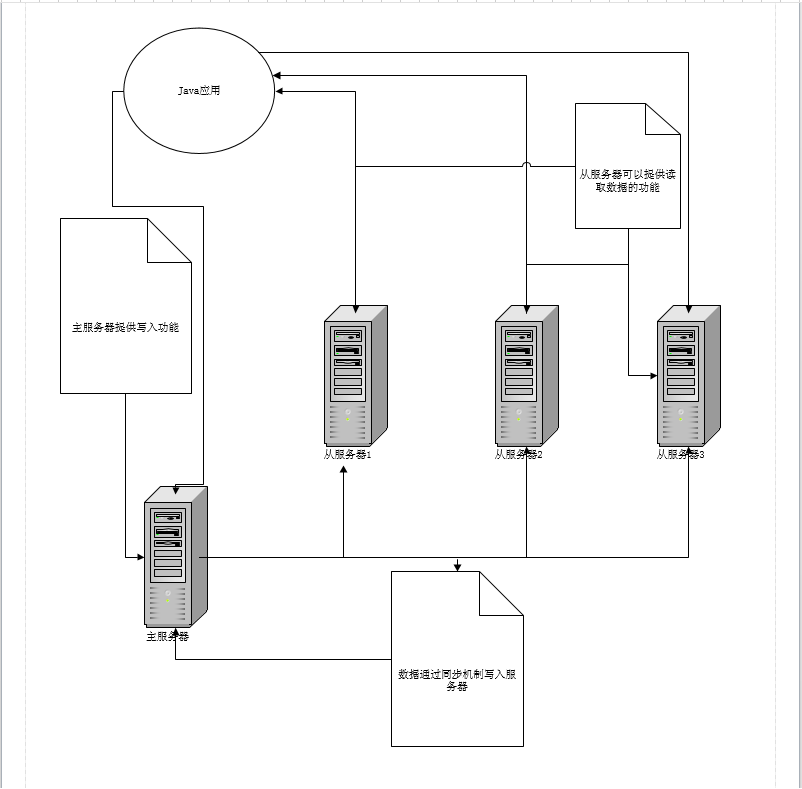
20.4.2 Redis主从同步配置
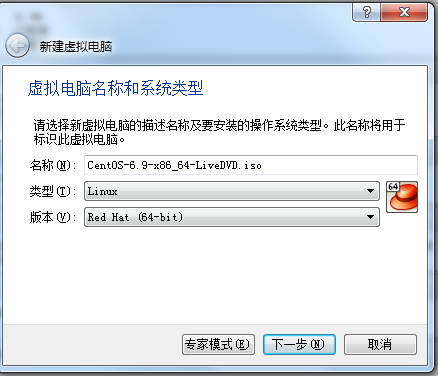


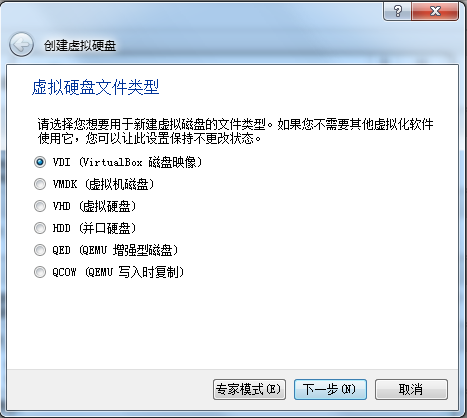

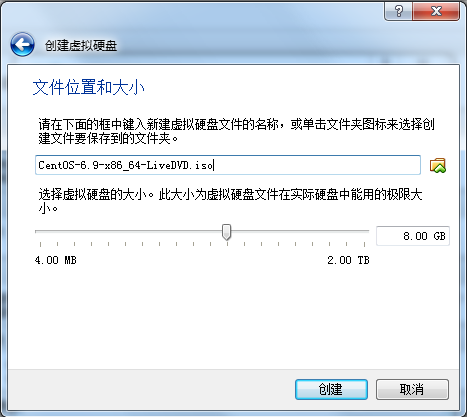
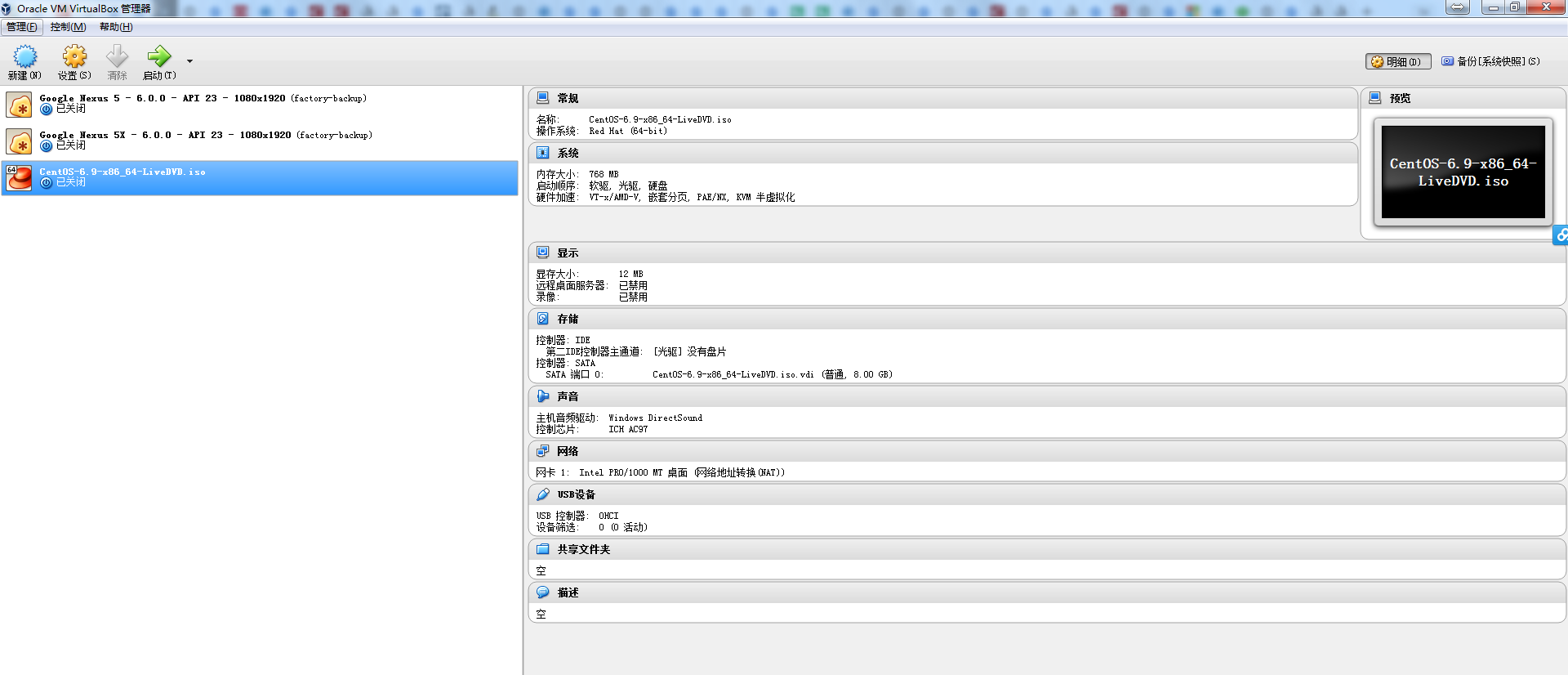
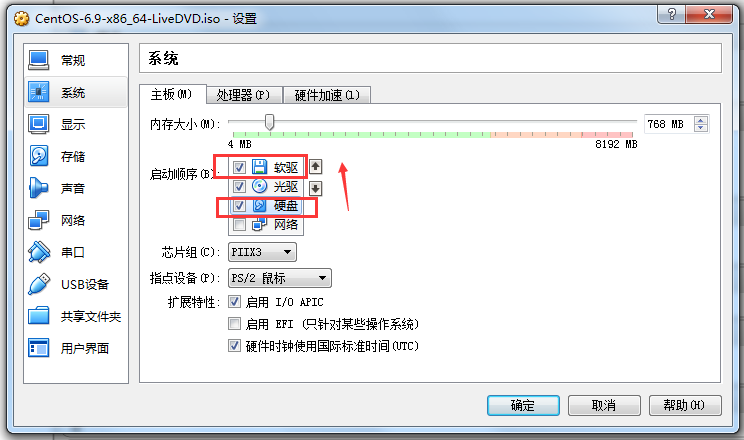
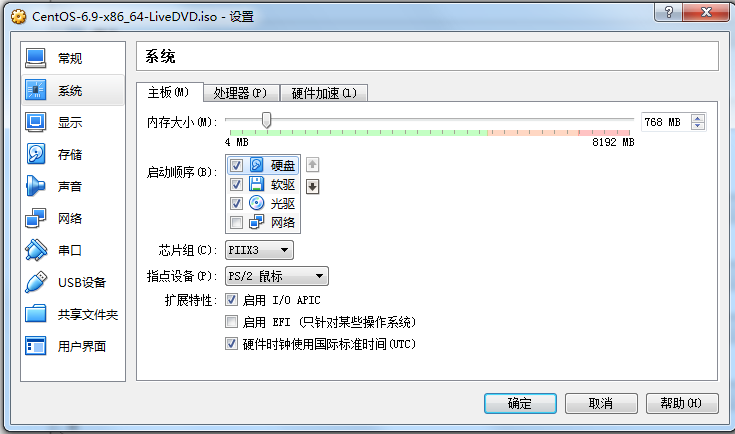
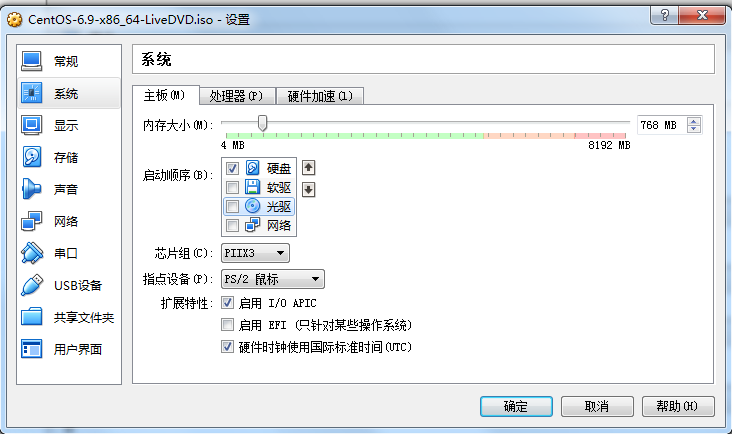
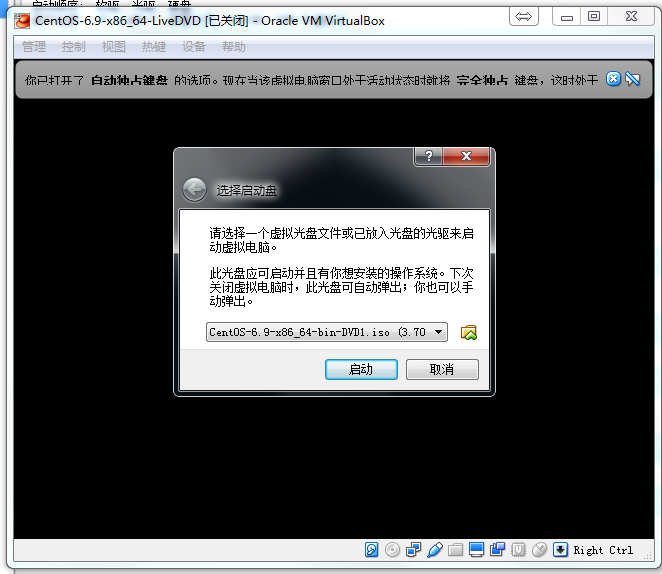




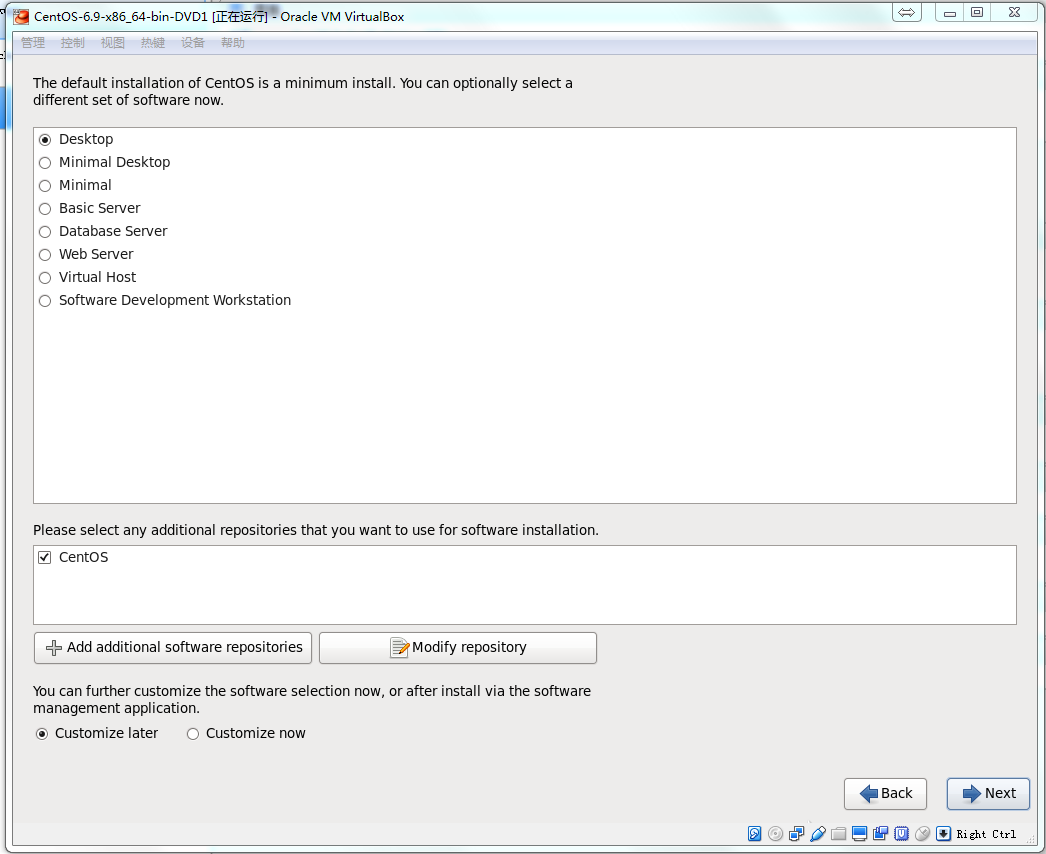

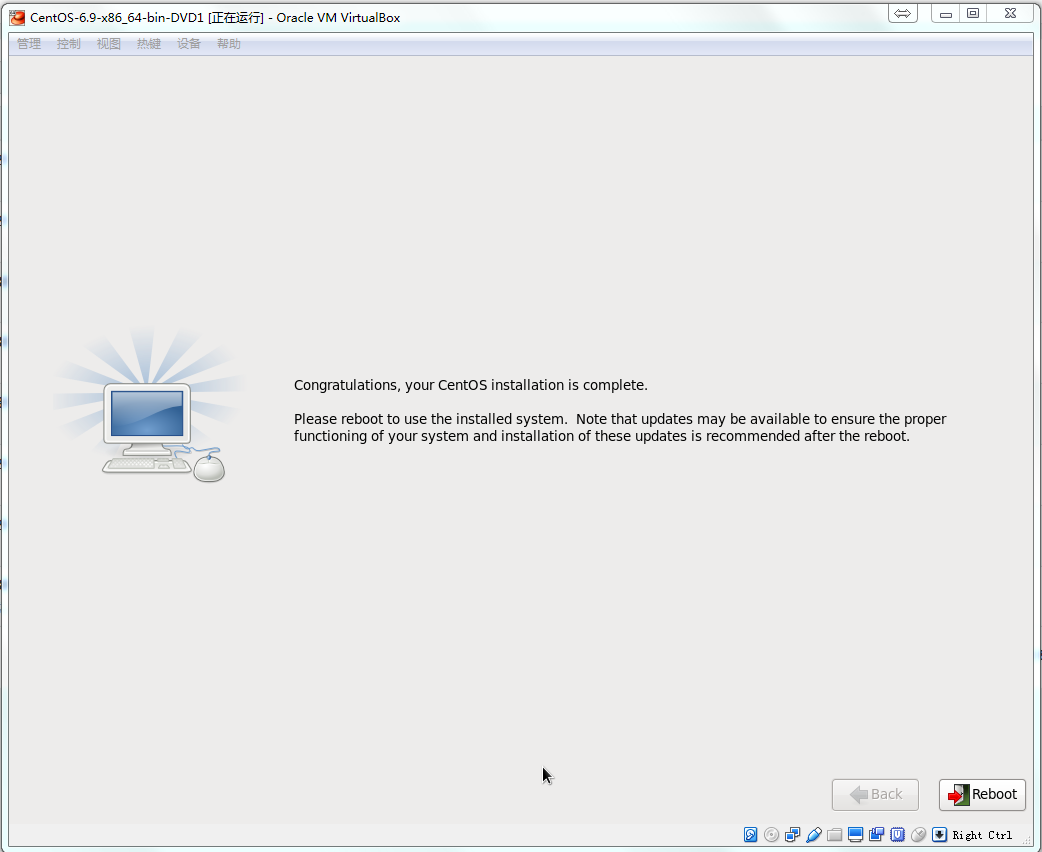
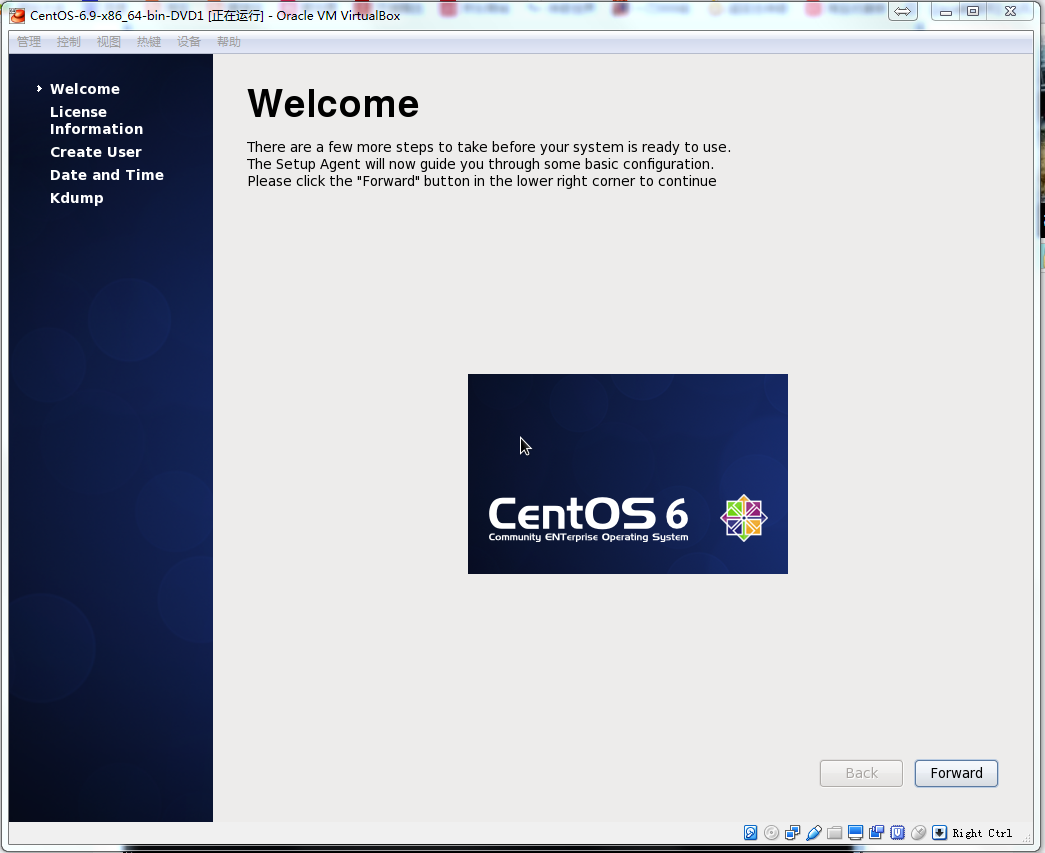
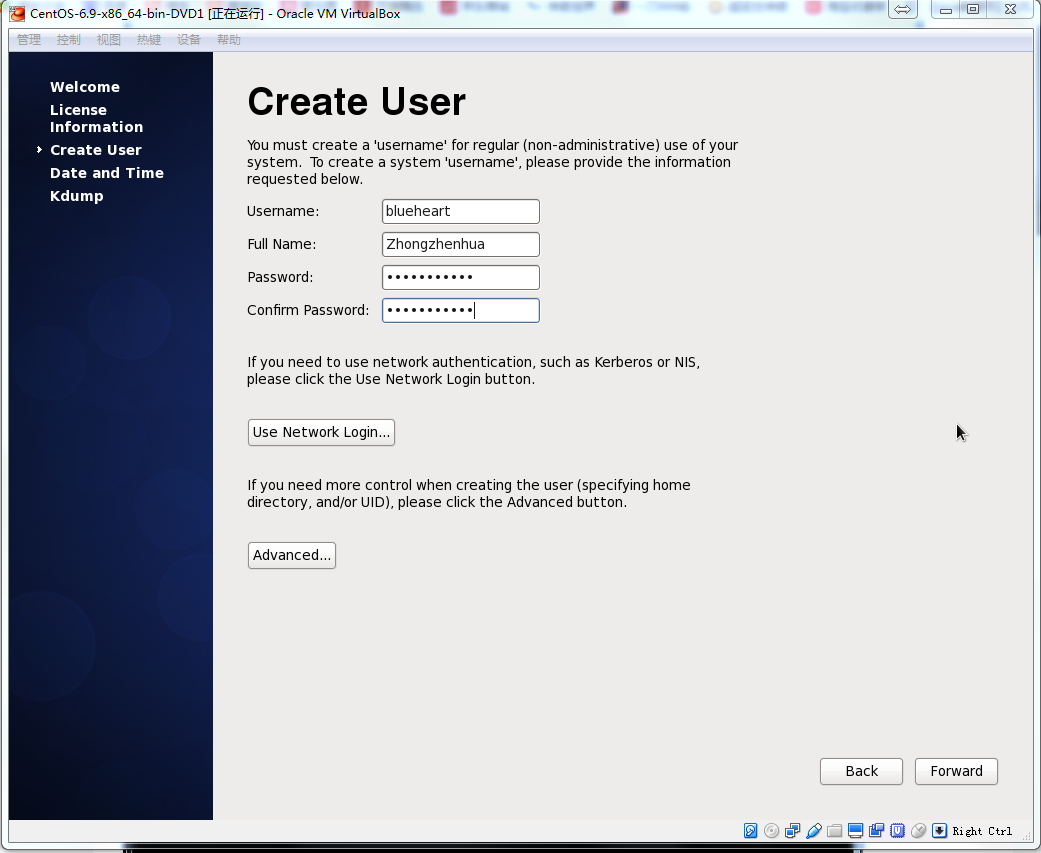

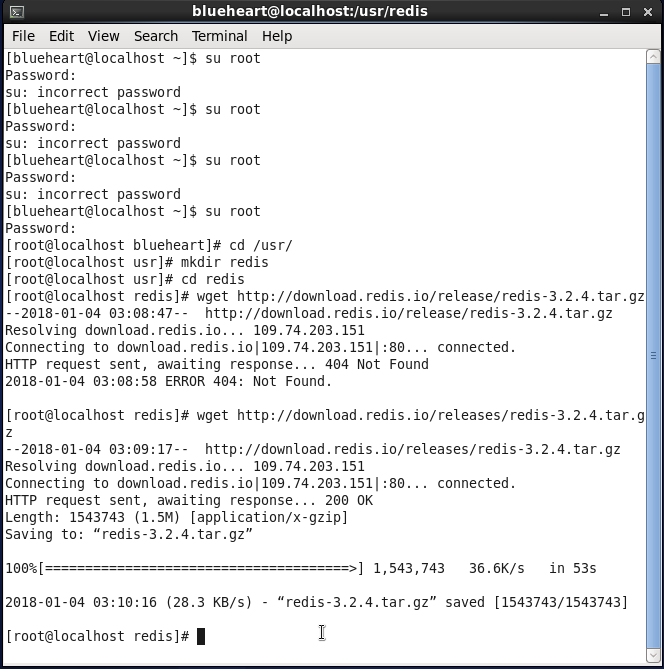

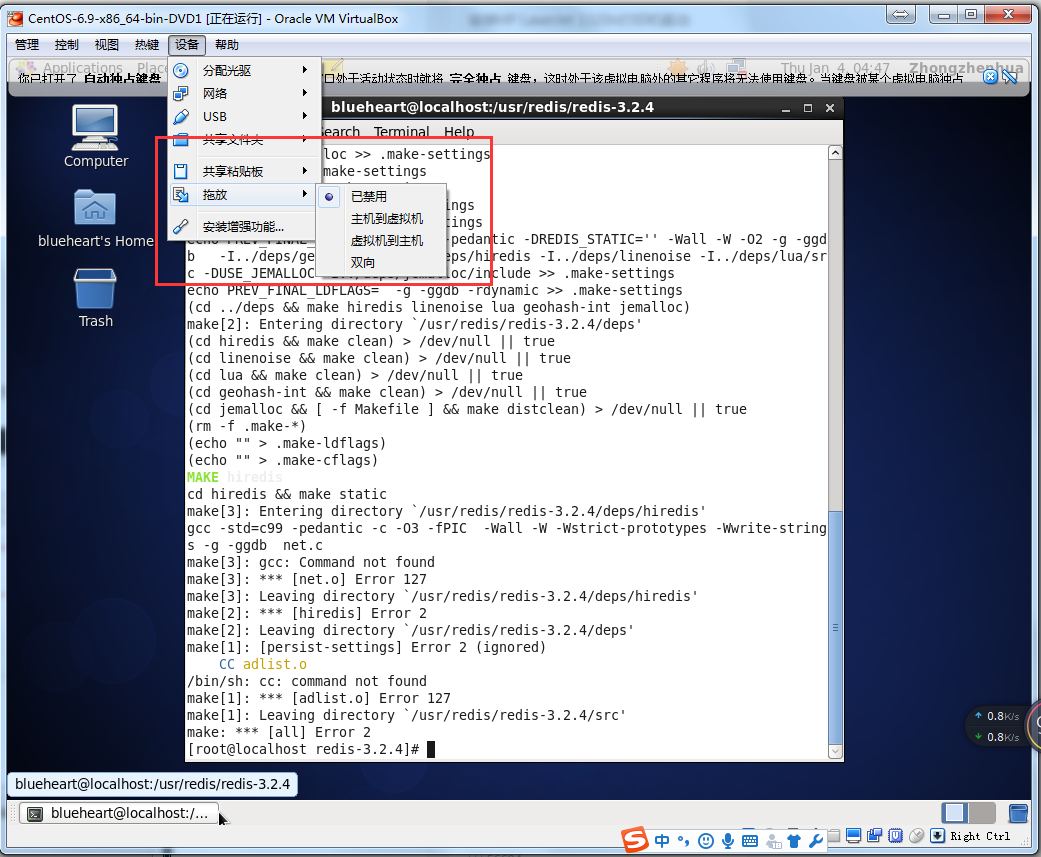

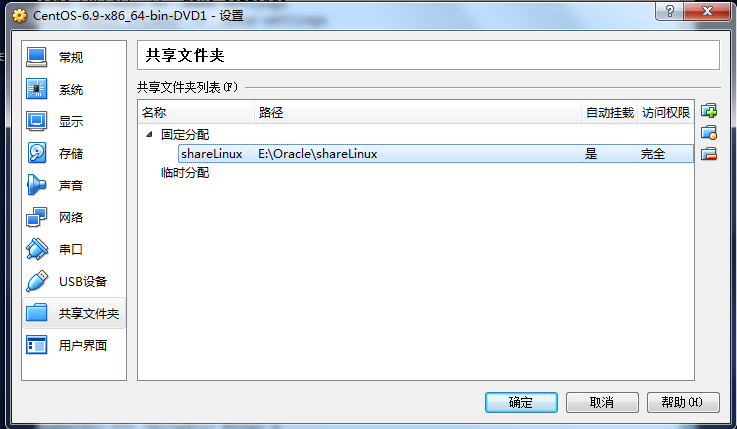

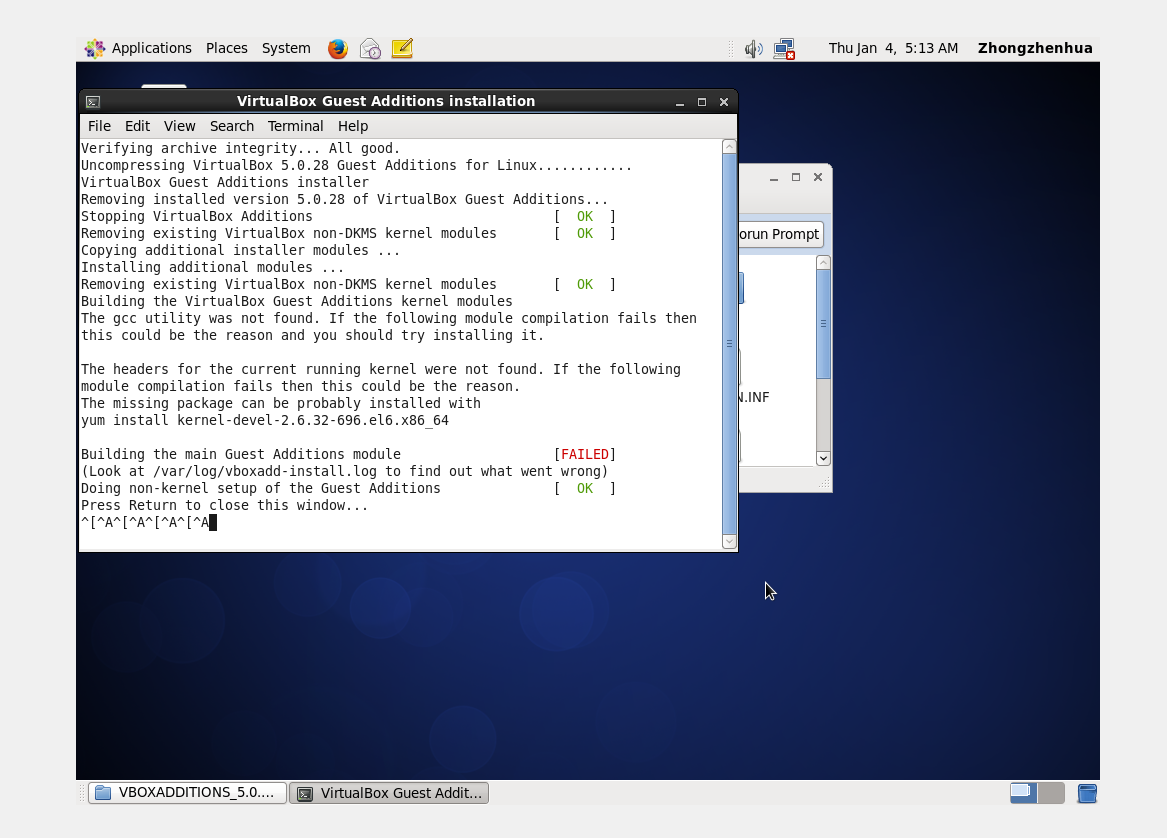
坑爹装Virtual Box增强都会报错,哦,我记得了,应该要用超级管理员账户登录才可以安装增强。

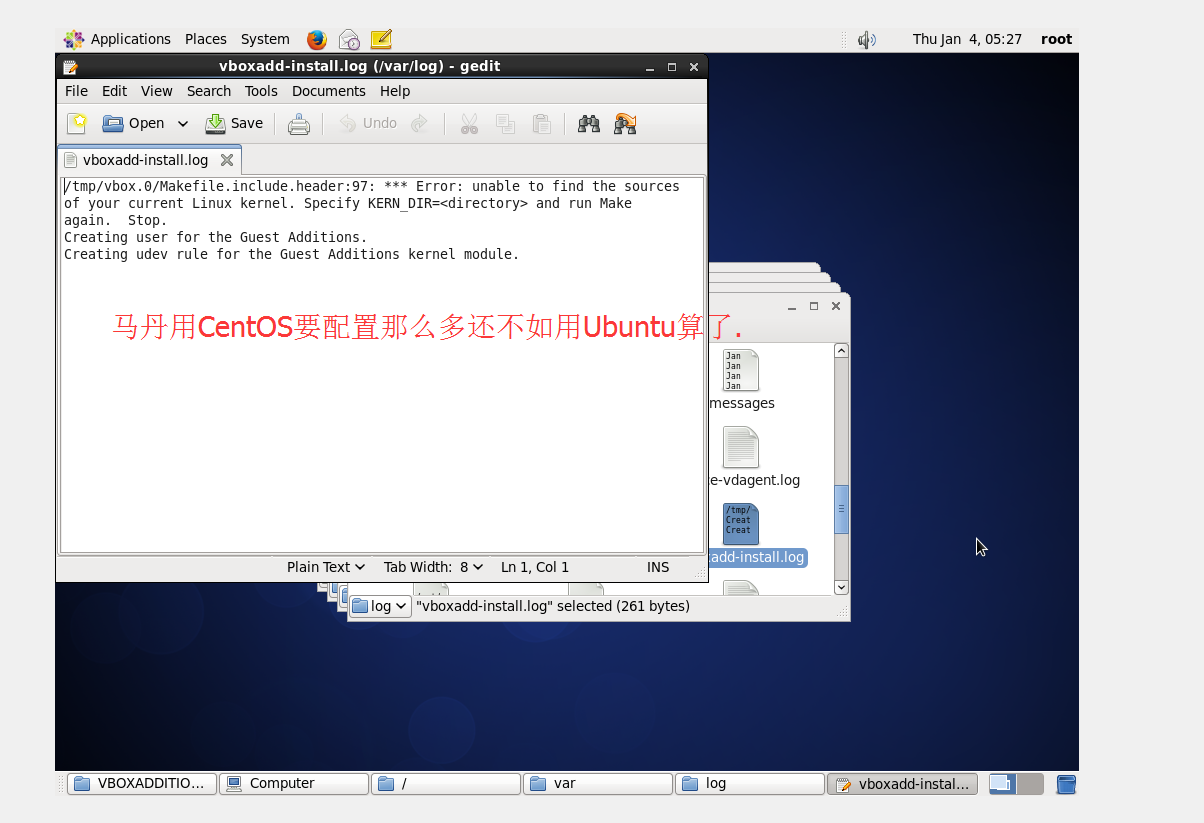

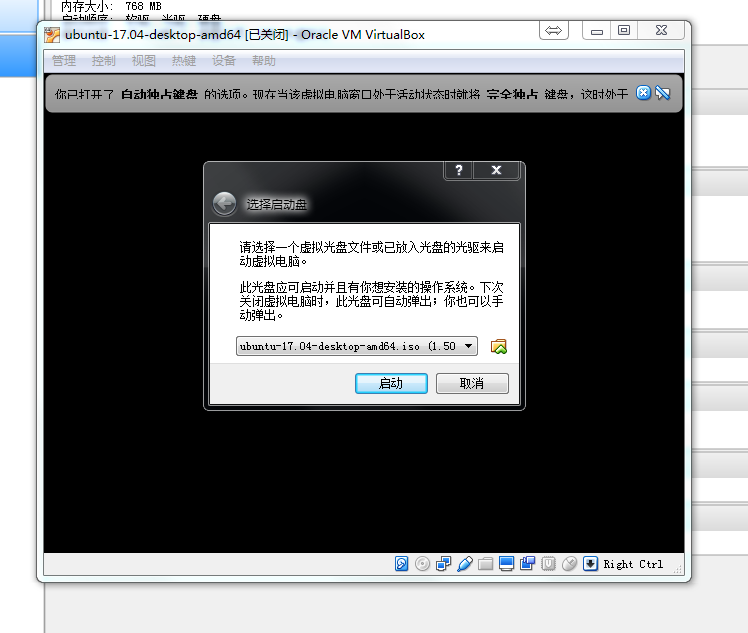


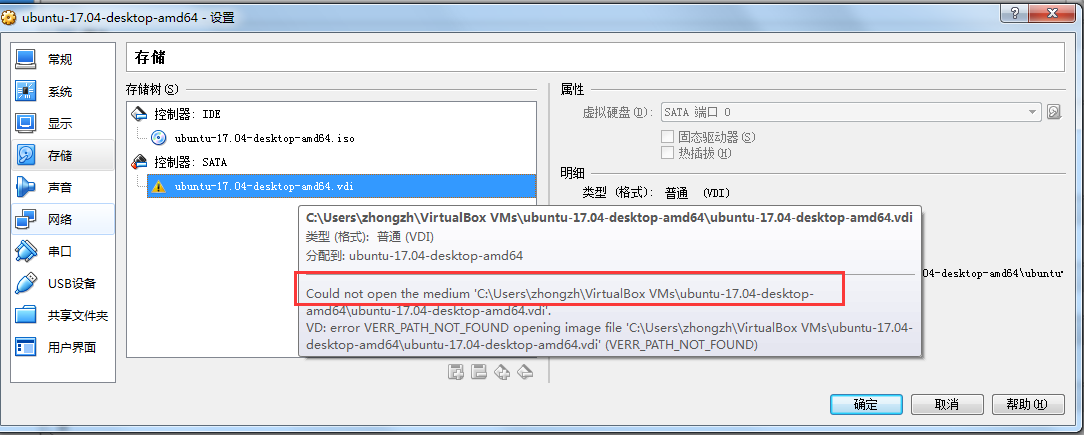
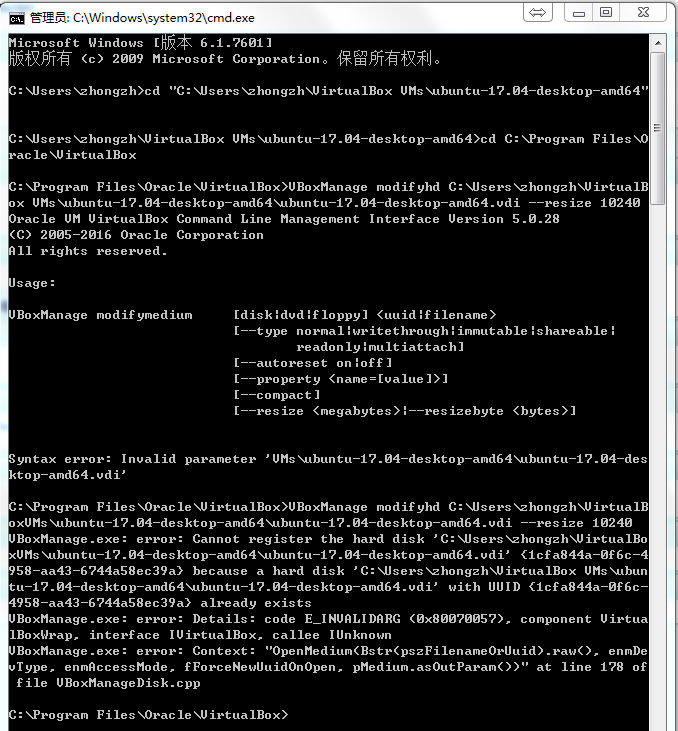

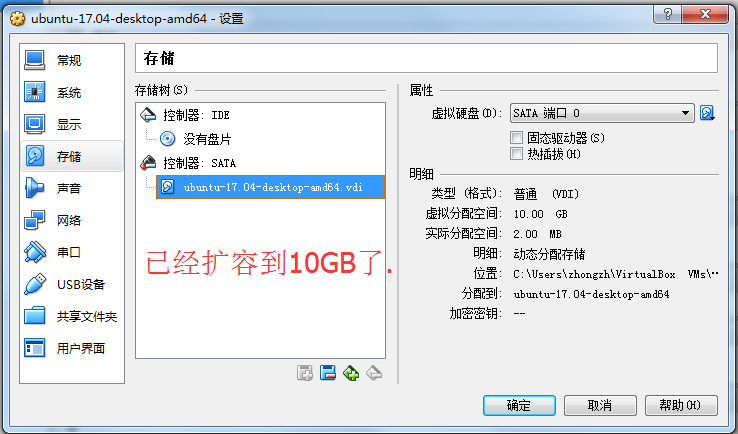
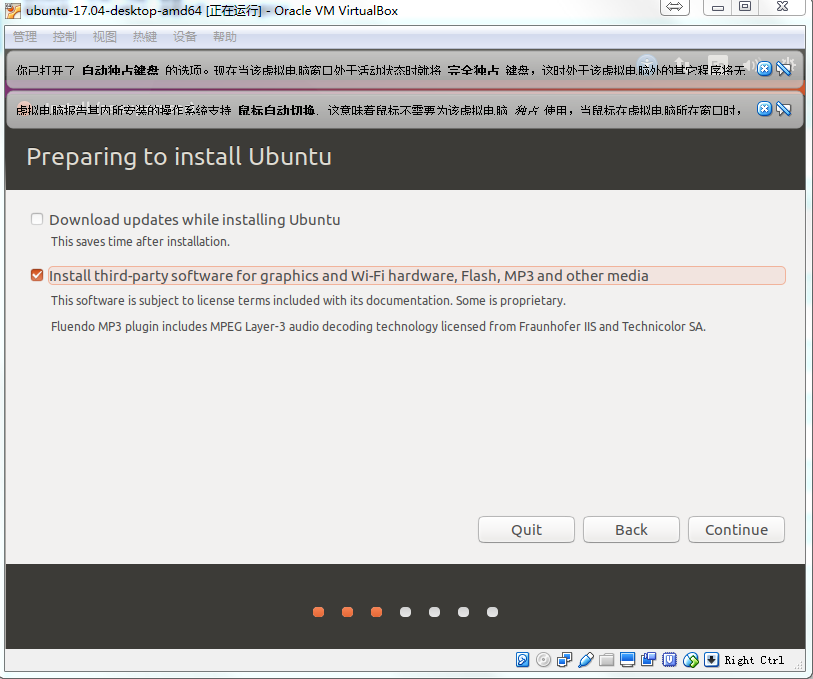
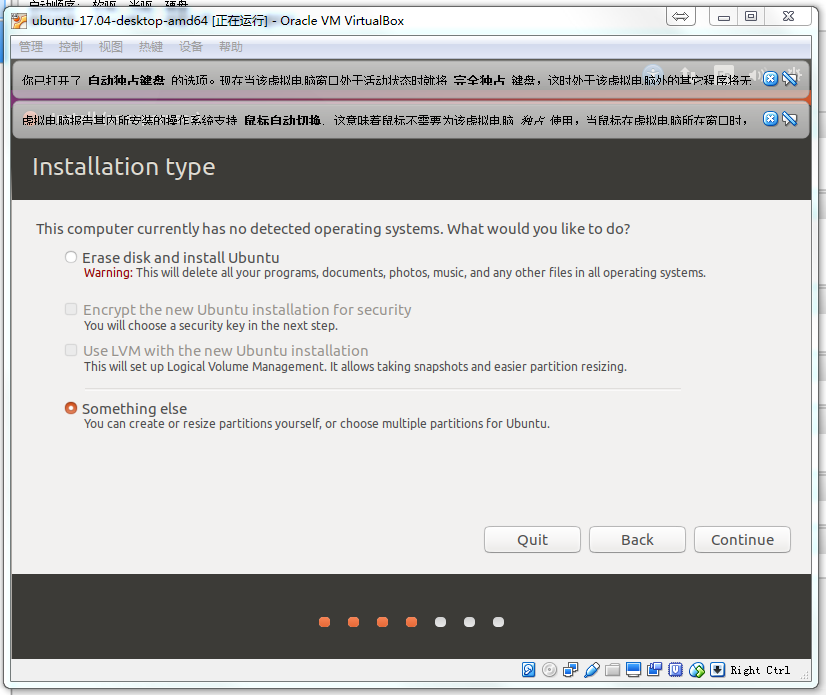
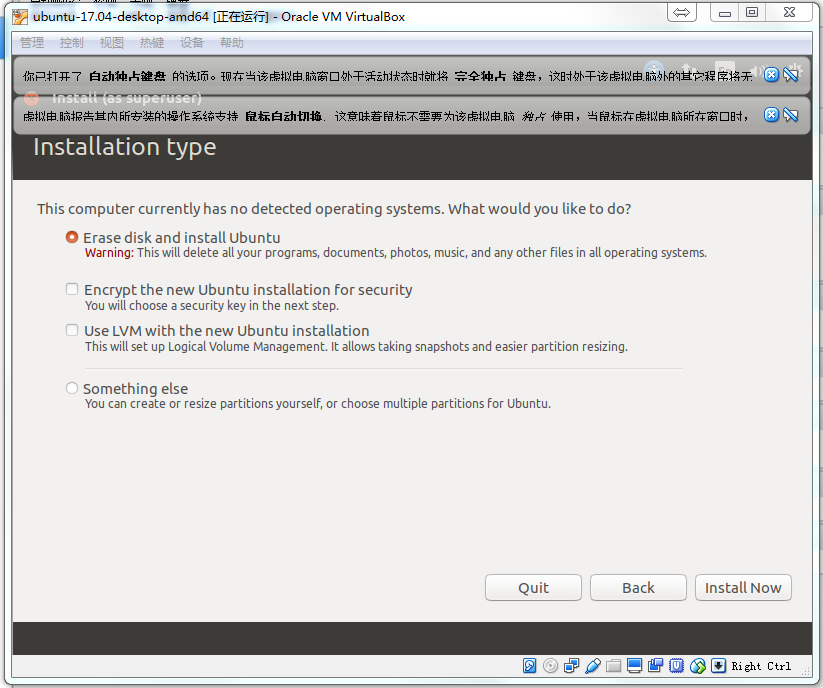


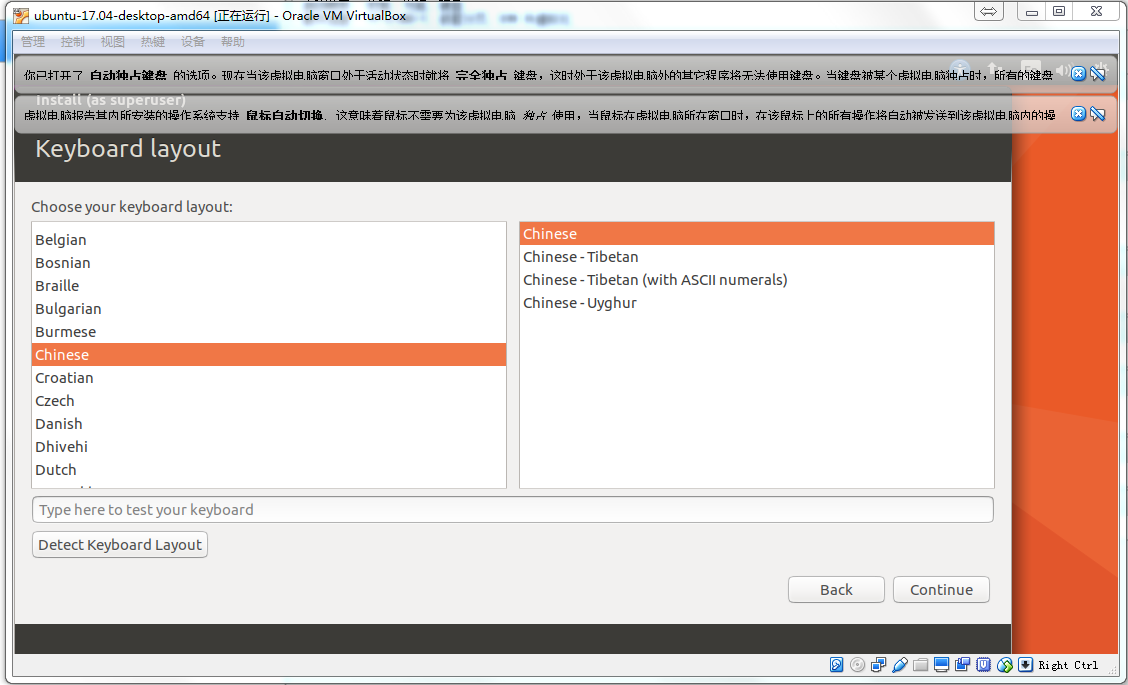


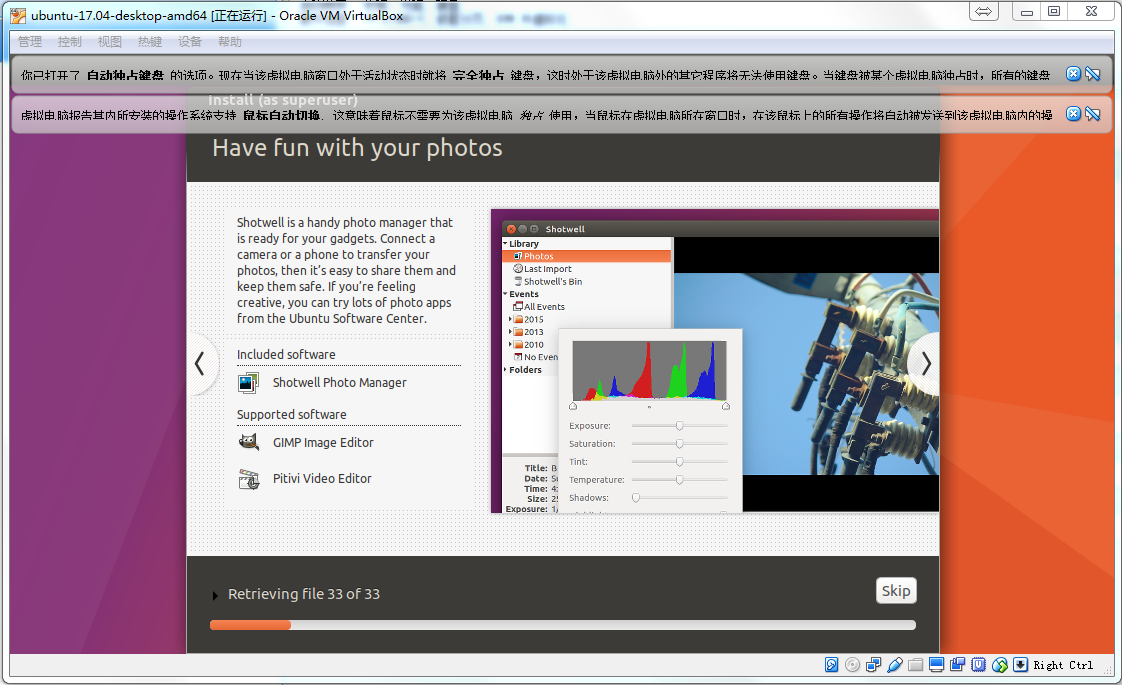
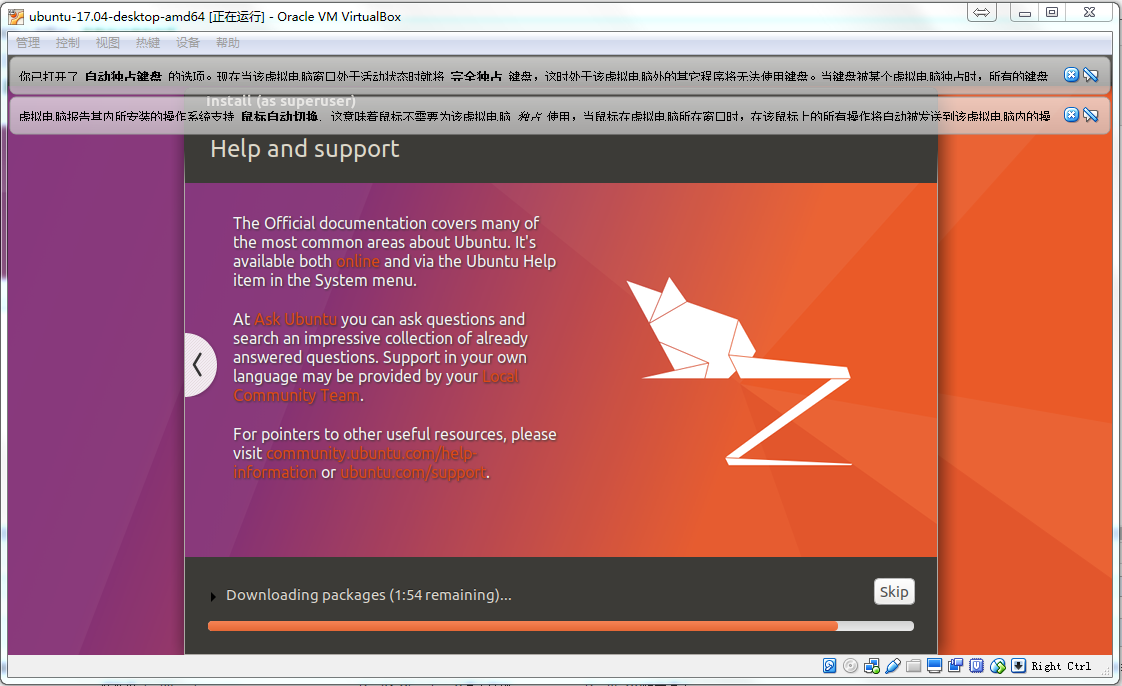
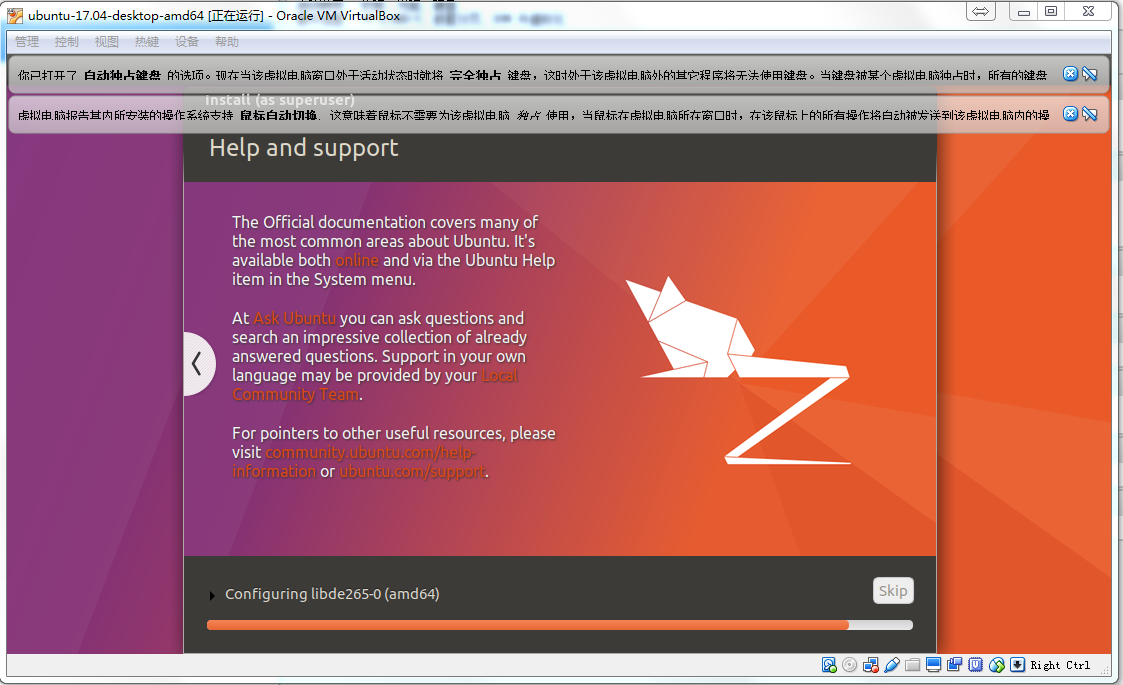
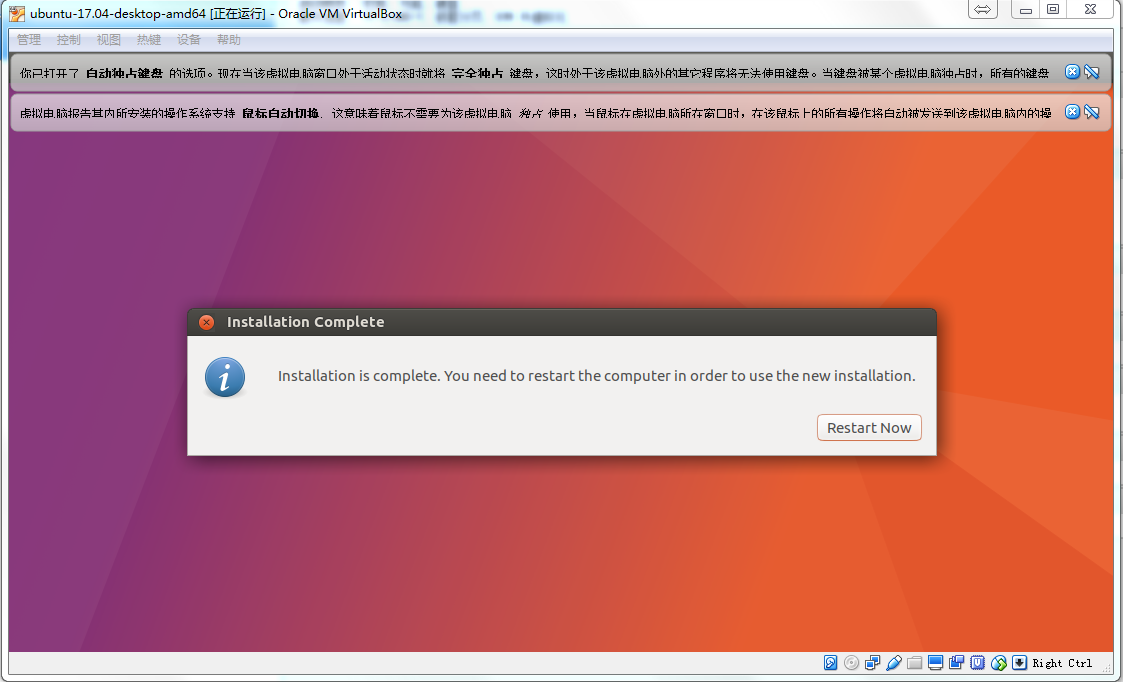

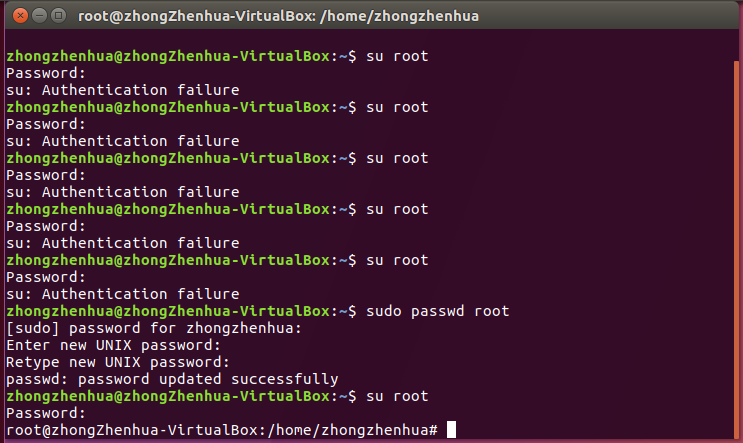
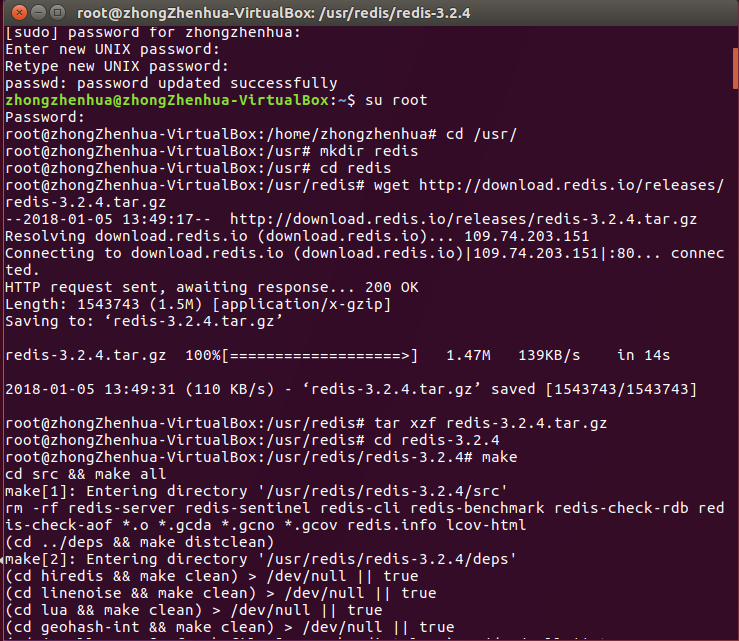
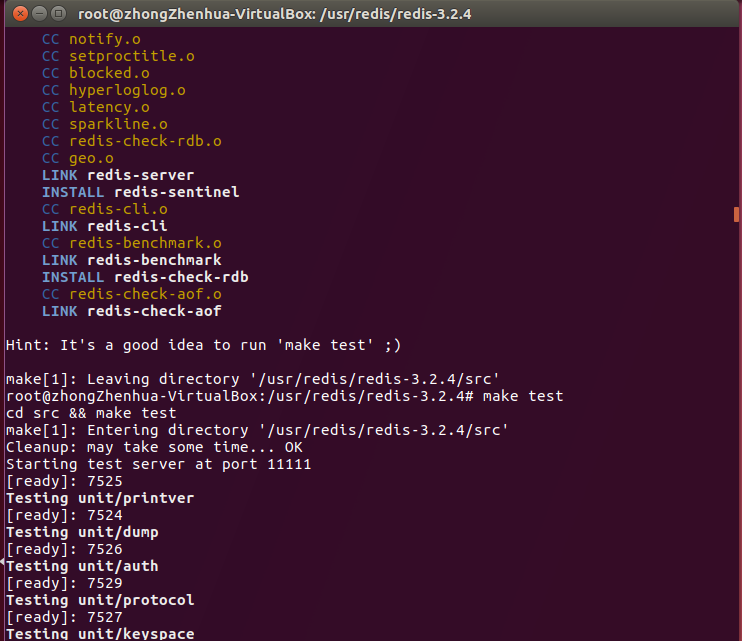
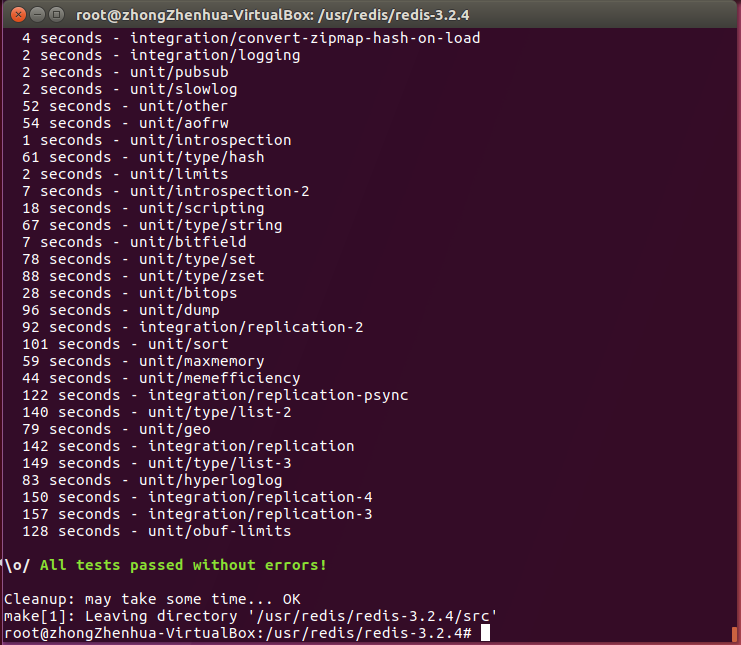
接下来安装一下Virtual Box的增强功能吧,Ubuntu系统应该没问题,不需要配置。
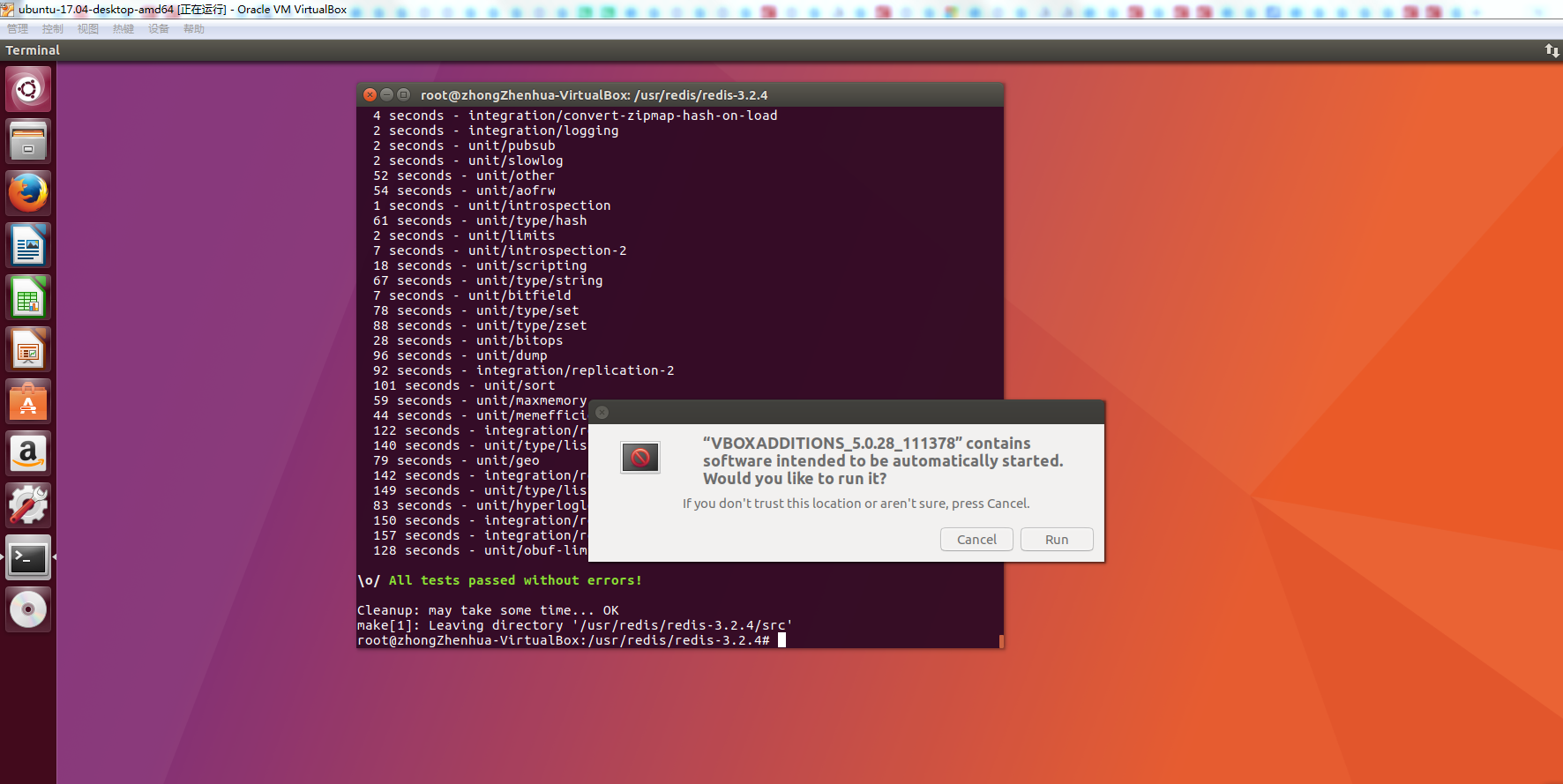

make install

利用Virtual Box的虚拟机克隆功能将刚刚那个linux系统克隆一份作为slave,并修改其IP为192.168.0.110。
可以通过Vritualbox自带的一个命令行工具解决,UI上没有提供对应的解决方案
1.定位到Vritualbox的安装目录,不能用全路径的方式直接执行该命令行
2.执行VBoxManage.exe clonevdi "C:\Users\zhongzh\VirtualBox VMs\ubuntu-17.04-desktop-amd64\ubuntu-17.04-desktop-amd64.vdi" "C:\Users\zhongzh\VirtualBox VMs\ubuntu-17.04-desktop-amd64\ubuntu-17.04-desktop-amd64_1.vdi"
执行过程,大概就是这样了,原本一个10G的vdi,几分钟就克隆完了
C:\Program Files\Oracle\VirtualBox>VBoxManage.exe clonevdi "C:\Users\zhongzh\Vir tualBox VMs\ubuntu-17.04-desktop-amd64\ubuntu-17.04-desktop-amd64.vdi" "C:\Users \zhongzh\VirtualBox VMs\ubuntu-17.04-desktop-amd64\ubuntu-17.04-desktop-amd64_1. vdi" 0%...10%...20%...30%...40%...50%...60%...70%...80%...90%...100% Clone medium created in format 'VDI'. UUID: 4e5b286e-3d15-45eb-99fe-f48f9f6062f2



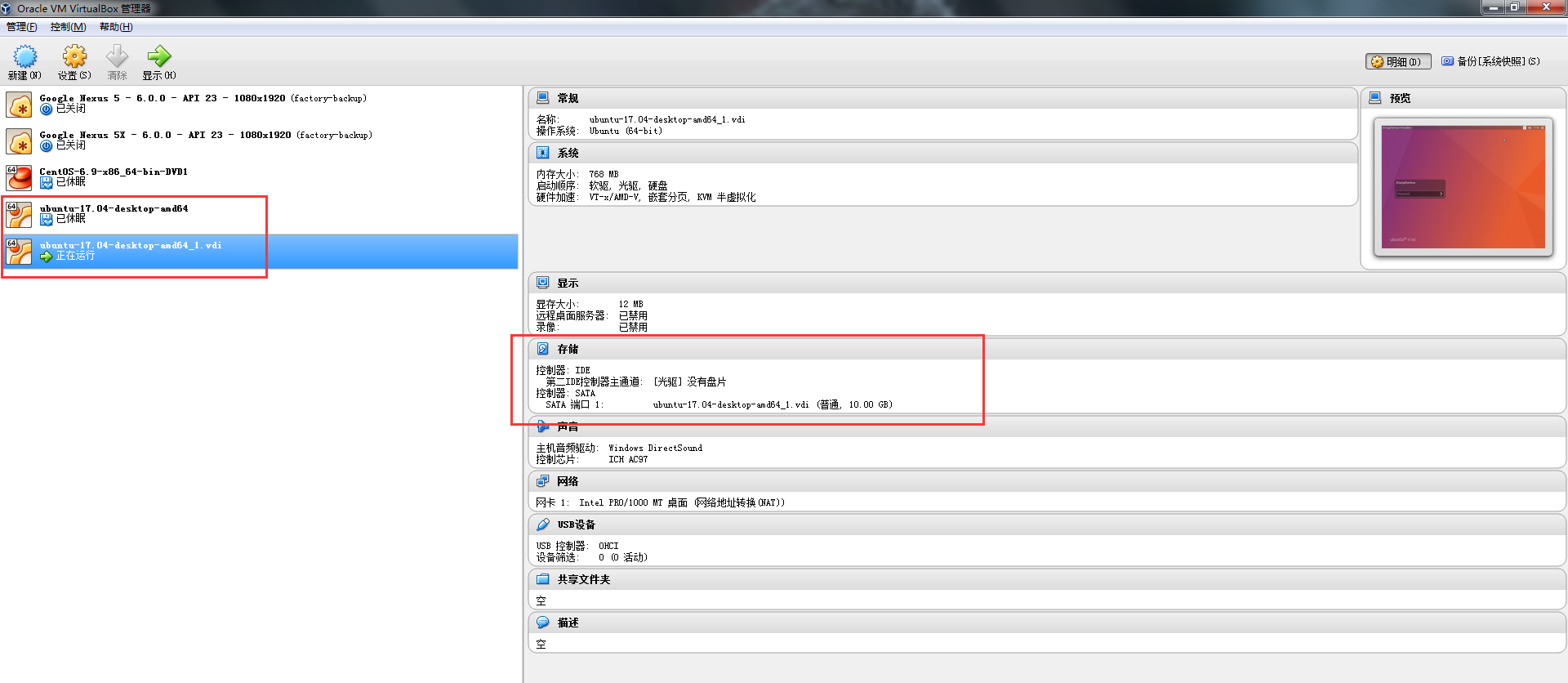
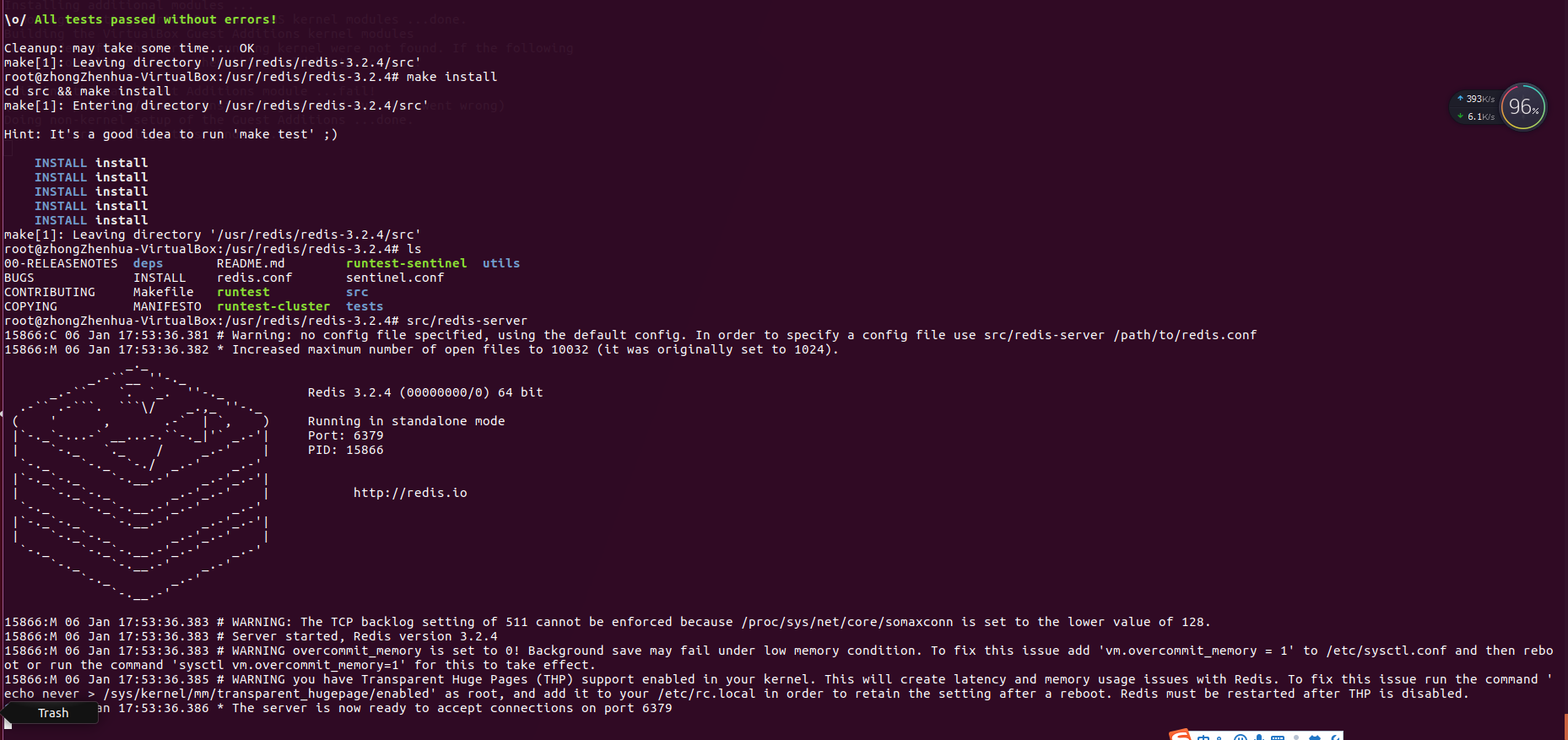



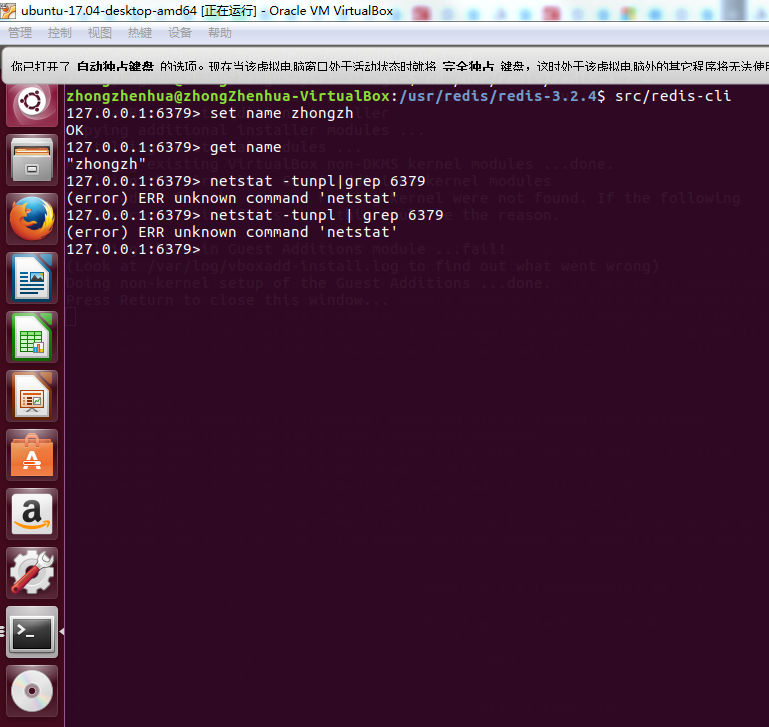
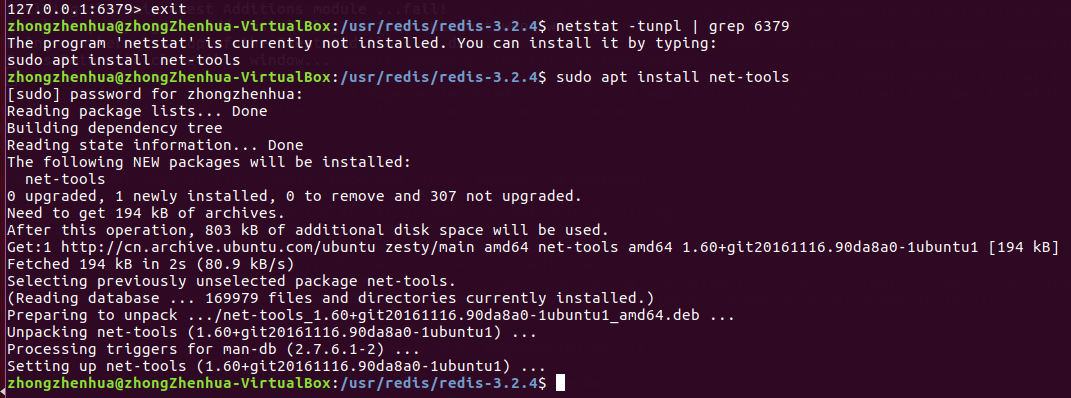

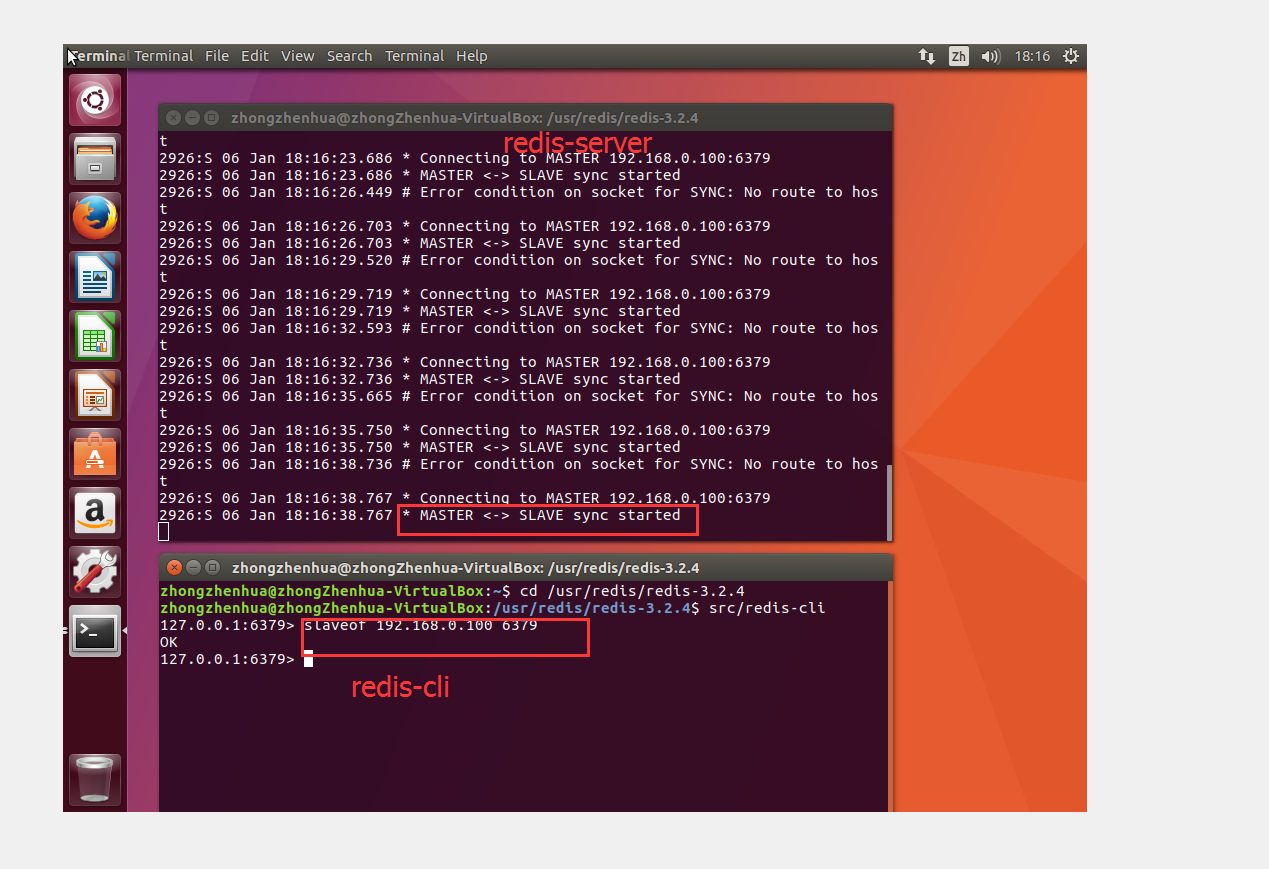
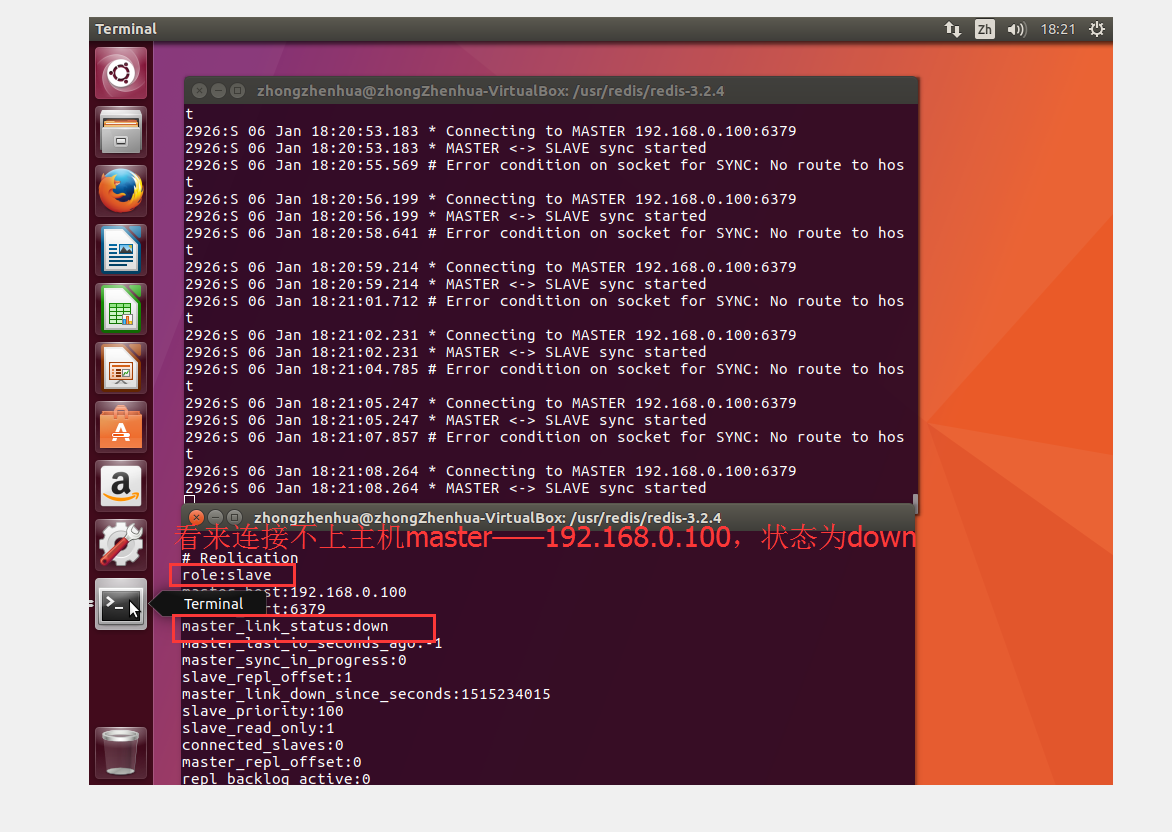


应该是网络问题,因为master和slave都ping不通宿主机,调试一下网络

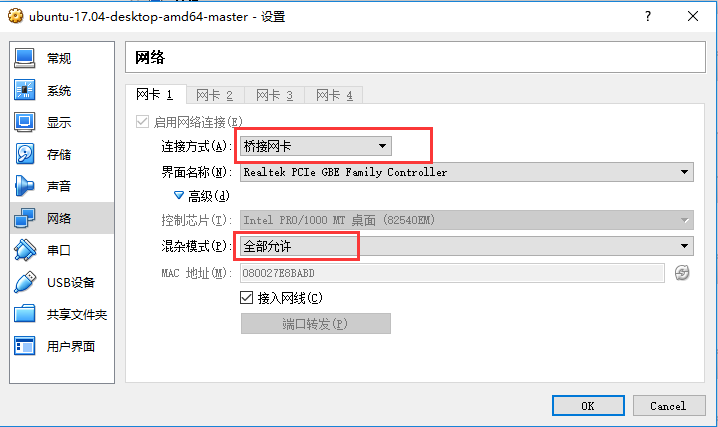

修改master和slave的网络配置文件

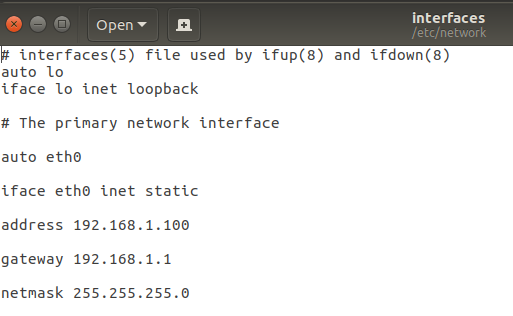
然后master和slave就可以互相ping和telnet通了
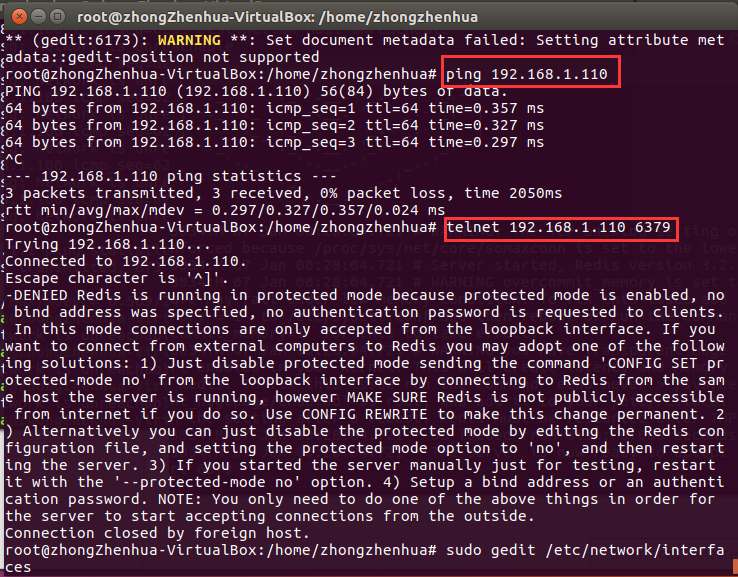
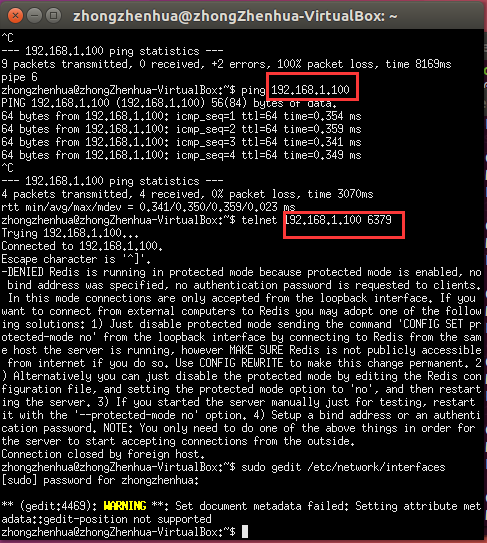
20.4.3 Redis主从同步过程
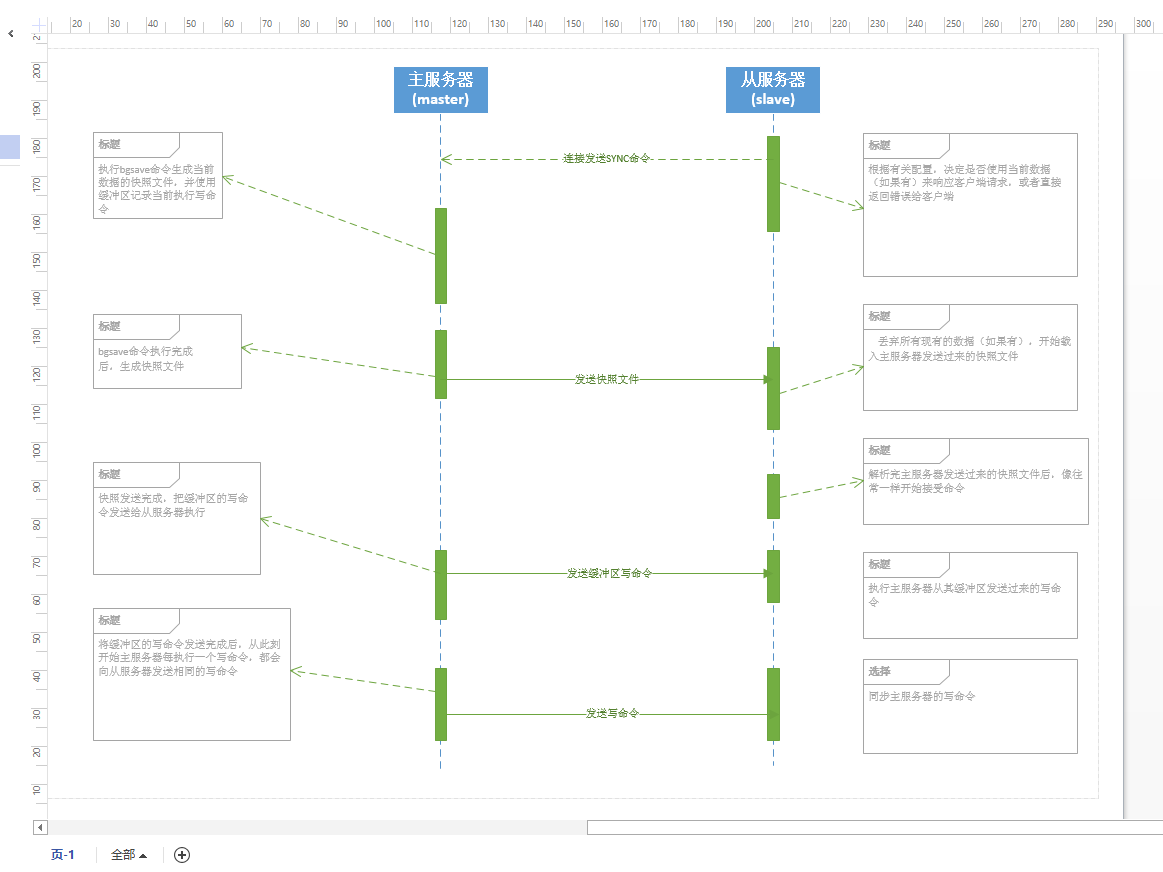
多从机同步机制,如图20-4所示。

图20-4 多从机同步机制
20.5 哨兵(Sentinel)模式
20.5.1 哨兵模式概述
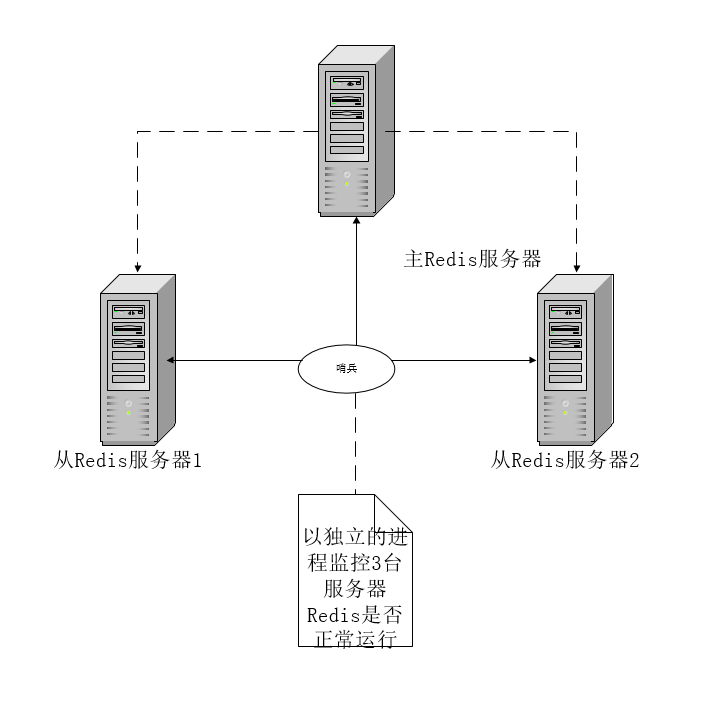
图20-5 Redis哨兵
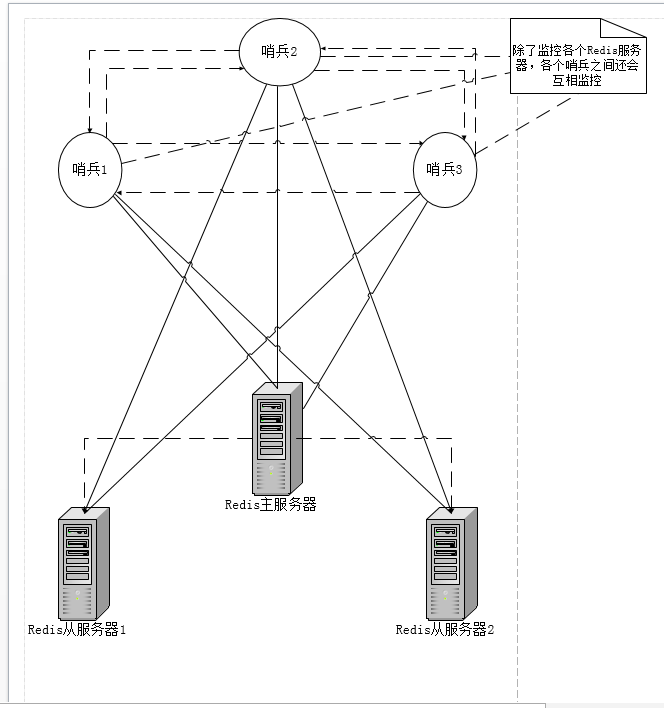
图20-6 多哨兵监控Redis
20.5.2 搭建哨兵模式
20.5.3 在Java中使用哨兵模式
20.5.4 哨兵模式的其他配置项



